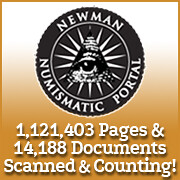
About UsThe Numismatic Bibliomania Society is a non-profit organization devoted to the study and enjoyment of numismatic literature. For more information please see our web site at coinbooks.org SubscriptionsThose wishing to become new E-Sylum subscribers (or wishing to Unsubscribe) can go to the following web page link MembershipThere is a membership application available on the web site Membership Application To join, print the application and return it with your check to the address printed on the application. Print/Digital membership is $40 to addresses in the U.S., and $60 elsewhere. A digital-only membership is available for $25. For those without web access, write to: Terry White, Treasurer AsylumFor Asylum mailing address changes and other membership questions, contact Terry at this email address: terrywhite5475@yahoo.com SubmissionsTo submit items for publication in The E-Sylum, just Reply to this message, or write to the Editor at this address: whomren@gmail.com
BUY THE BOOK BEFORE THE COIN |
- WAYNE'S WORDS: THE E-SYLUM JULY 26, 2017
- NEW BOOK: WHITMAN GUIDE TO COIN COLLECTING
- NEW BOOK: EARLY QUARTERS AUCTION APPEARANCES
- NEW BOOK: NEW ZEALAND HISTORY COINED
- NEW BOOK: MONEY TALKS
- NEW BOOK: SCHER COLLECTION OF PORTRAIT MEDALS
- NEW BOOK: AUSTRIAN MEDALLIST CARL RADNITZKY
- BRONX COIN CLUB CELEBRATES 1000TH MEETING
- SPMC PARTNERS WITH NEWMAN PORTAL
- 1913 LIBERTY NICKEL FIRST SEEN IN 1919
- MYSTERY COIN: DIOCLETIAN ABDICATION NUMMUS
- NOTES FROM E-SYLUM READERS: JULY 23, 2017
- CARSON CITY COIN PRESS NO. 1 BACK IN ACTION
- 2017 DENVER ANA CONVENTION EVENTS
- 2017 ORDERS &amo; MEDALS SOCIETY CONVENTION
- VOCABULARY TERM: TABLE MEDAL
- GEORGE HARINGX (1873-1957)
- ARTICLE HIGHLIGHTS KRAUSE FOUNDATION EFFORTS
- MORE ON THE BANK OF CANADA MUSEUM
- BRITANNIA COPYRIGHT NIXES FALKLANDS COIN
- 1977 GASPARRO LIBERTY DOLLAR REPRODUCTIONS
- 1942 EXPERIMENTAL GLASS, PLASTIC, ZINC CENTS
- QUERY: A POSSIBLE U.S. PATTERN COIN?
- HOAGY CARMICHAEL'S KENNEDY ASSASSINATION HALF
- KENNEDY COMMEMORATIVE COIN ACT LEGISLATION
- NUMISMATIC NUGGETS: JULY 23, 2017
- A NEW UNITED SOUTH TOKEN DIE VARIETY
- A LIST OF COIN BLOG WEB SITES
- RESEARCHERS COMPILE COIN DIGIT IMAGE DATABASES
- ANNANDALE COIN SHOW KIDS PROGRAM JULY 2017
- SLOW SUMMER FOR 1714 FLEET TREASURE SALVORS
- EXHIBIT: GEORGIA - AMERICA’S FIRST GOLD RUSH
- CANADA'S DIEPPE COMMEMORATIVE CONTROVERSY
- YALE UNIVERSITY ELIZABETHAN CLUB MEDAL
- JANE AUSTEN BANKNOTE UNVEILED
- JANE AUSTEN BANKNOTE VIDEOS
- FEATURED WEB SITE: COINS AND HISTORY OF ASIA
Click here to access the complete archive
To comment or submit articles, reply to whomren@gmail.com
Content presented in The E-Sylum is not necessarily researched or independently fact-checked, and views expressed do not necessarily represent those of the Numismatic Bibliomania Society.
WAYNE'S WORDS: THE E-SYLUM JULY 26, 2017
 This week we open with SIX new books, a coin club milestone, a great new addition to the Newman Portal, and a new discovery about the 1913 Liberty nickels.
This week we open with SIX new books, a coin club milestone, a great new addition to the Newman Portal, and a new discovery about the 1913 Liberty nickels.
Other topics this week include the diocletian abdication nummis, Carson City Coin Press No. 1, the Denver ANA, coin design copyright issues, a coin digit database, Dahlonega gold, Yale's Elizabethan club medal, and the new Jane Austen banknote.
To learn more about New Zealand coinage, portrait medals, Samuel W. Brown, Chinese bamboo tally sticks, the original sculpt for the Lincoln cent, the Baghdad Shilling, Joe DiMaggio's Presidential Medal of Freedom, the Experimental Amber Glass Cent, and the 1900 Exposition Universelle Medal, read on. Have a great week, everyone!
Wayne Homren
Editor, The E-Sylum

NEW BOOK: WHITMAN GUIDE TO COIN COLLECTING
at the August 2017 Denver ANA Show
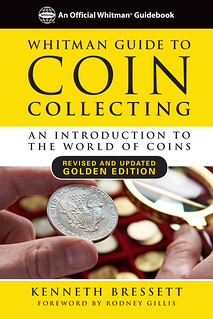 Whitman Publishing announces the release of the newest edition of the Whitman Guide to Coin Collecting: An Introduction to the World of Coins, by Kenneth Bressett. The 288-page softcover book debuted July 4, 2017, and is now available from booksellers and hobby shops nationwide, and online (including at www.Whitman.com), for $12.95. Mr. Bressett will autograph copies at the American Numismatic Association World’s Fair of Money in Denver, August 1–5, 2017.
Whitman Publishing announces the release of the newest edition of the Whitman Guide to Coin Collecting: An Introduction to the World of Coins, by Kenneth Bressett. The 288-page softcover book debuted July 4, 2017, and is now available from booksellers and hobby shops nationwide, and online (including at www.Whitman.com), for $12.95. Mr. Bressett will autograph copies at the American Numismatic Association World’s Fair of Money in Denver, August 1–5, 2017.
The guide, popularly known as the “Yellow Book,” includes chapters on coin collecting as a hobby; places to find coins; how coins are made; venues to learn about collecting; getting started as a collector; caring for a coin collection; grading techniques and standards; coin prices and values; commemoratives, bullion, special coin issues, counterfeits, medals, tokens, casino chips, and more.
Illustrated with 672 full-color photographs and other images, the Whitman Guide to Coin Collecting also includes charts, lists, an illustrated glossary, a bibliography for continued learning, and an index for looking up information.
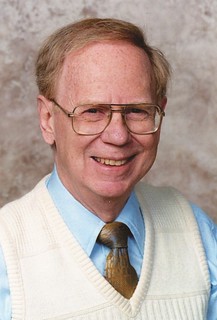 “Generations of coin collectors know Ken Bressett as the senior editor of the ‘Red Book,’” said Whitman publisher Dennis Tucker, referring to the annual Guide Book of United States Coins. “More than 24 million copies of the Red Book have been sold since 1946, and Ken has worked on the book since the 1950s. He’s also served the hobby as president of the American Numismatic Association, and as an educator, researcher, and author. He’s the perfect teacher to introduce new collectors to the hobby.”
“Generations of coin collectors know Ken Bressett as the senior editor of the ‘Red Book,’” said Whitman publisher Dennis Tucker, referring to the annual Guide Book of United States Coins. “More than 24 million copies of the Red Book have been sold since 1946, and Ken has worked on the book since the 1950s. He’s also served the hobby as president of the American Numismatic Association, and as an educator, researcher, and author. He’s the perfect teacher to introduce new collectors to the hobby.”
Case studies, personal memories, and unique insight from Bressett’s 60-plus years in the hobby make the Whitman Guide to Coin Collecting a unique resource. Rodney Gillis, the American Numismatic Association’s education director, wrote the book’s foreword. “Coin collecting opens up an entire world of learning, just waiting to be explored,” Gillis said. “As you read this book, you will notice how skillfully Ken interjects his love of history within the context of collecting. The Whitman Guide to Coin Collecting will prove to be an invaluable research tool for a novice and a standard reference to look back to once you have become a seasoned collector. By reading this book you are taking a very positive step in becoming a more informed collector at an accelerated rate.”
Chapters include: “Coin Collecting as a Hobby” (Reasons to collect and have a hobby. Why people collect coins. Pride of ownership. Popularity and growth of coin collecting. A look at coins as historical documents.) “Coins Are Where You Find Them” (Check your pocket change. Why we use coins. Different kinds of coins. Other forms of money. How coins are made. What to look for in a coin. Mints and mintmarks.) “Learning About Your Coins” (Varieties, types, and differences that affect value. Coin clubs, trade shows, exhibits, dealers. Books on the subject. ANA services. Museums.) “How to Get Started” (The best places to look for coins. What to buy. Necessary tools and equipment. Publications.) “Caring for Your Collection” (Albums and holders. Storage problems. What you must know about cleaning your coins. Insurance considerations. Paper products.) “Grading Techniques and Standards” (How to grade coins. What to look for in investment grade coins. Use of grading guides and books. Grading services.) “Coin Prices and Values” (How to buy for best value. Pricing charts. Investing in rare coins. When it’s time to sell.) “Catalog of Special Coin Prices” (Prices for select coins most wanted by beginners. Why some coins are a better value than others.) “Commemorative, Bullion, and Special Coins” (Why commemorative coins are so popular. What is in the future for special coin issues. Where and how to purchase bullion coins. Collecting Mint and Proof sets.) “Oddities, Counterfeits, and Other Coins” (How to spot a counterfeit coin. Authentication services. Error coins. Tokens. Gaming chips. Coins from around the world.)
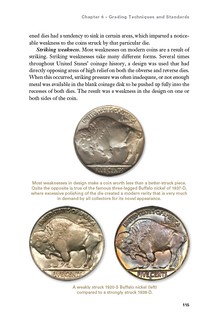
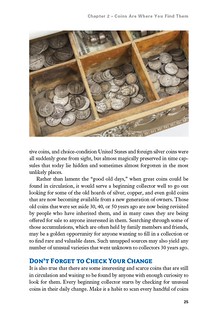
Whitman Guide to Coin Collecting: An Introduction to the World of Coins
By Kenneth Bressett; foreword by Rodney Gillis
ISBN 0794845215
Softcover, 6 x 9 inches, 288 pages, full color
Retail $12.95 U.S.
For more information, or to order, see:
https://www.whitman.com/store/Inventory/Detail/Whitman-Guide-to-Coin-Collecting+0794845215
NEW BOOK: EARLY QUARTERS AUCTION APPEARANCES
 The 6th edition of Auction Appearances &amo; Prices Realized for Early United States Quarters 1796 - 1838 or the AAPR for Bust Quarters is now at the printer and available for pre-order.
The 6th edition of Auction Appearances &amo; Prices Realized for Early United States Quarters 1796 - 1838 or the AAPR for Bust Quarters is now at the printer and available for pre-order.
It has been three years since the last edition was published. This was due to time constraints brought on by life &amo; work on a new series of books covering the early United States half dollar series. Of which, the first volume is now available and work is progressing on the second.
This compilation, encompassing over 200 pages, contains over 10,000 auction listings, from over 12 years of study and research, and up to 15+ years of statistical information relating to the die marriages found in the early quarter series. Listed within, you will find much more than just a list of auction appearance and what that particular coin sold for. You will also find listings of the grading service; the unique serial number given to each coin when available; die stage information and cataloger comments. All grades from all die marriages of the bust quarter series from 1796 to 1838 are included in this list.
The complete holdings of the following major collections were also added: Eliasberg — Norweb — Pittman
Several major collections that included bust quarters have been sold in the last few years, such as Pogue, Gardner and Newman, and these are also included in this edition.
In the recent past (the last 5-10 years or so), each of the major auction houses have begun to keep an online archive of past auctions and the coins sold. These archives are a tremendous source of information to the collector and each firm should be commended for continuing to fund and support this endeavor. Unfortunately these archives may or may not continue to exist into the future, due to mergers and companies being sold. So, at least for the bust quarter series, it is hoped that this compilation can be a permanent record for posterity.
Pre-orders for this issue can be purchased on my web site for $35. This includes free shipping for a limited time on pre-orders only, afterward shipping will be $4: http://www.earlyunitedstatescoins.com
Or, you can send payment via mail to:
Steve Tompkins
P.O. Box 844
Peculiar, MO 64078
Any questions feel; free to send me an e-mail:
SMT115@aol.com
NEW BOOK: NEW ZEALAND HISTORY COINED
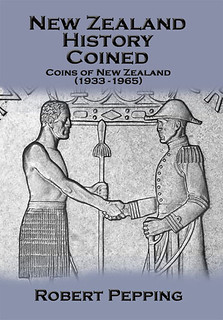 After years of research and preparation, ‘New Zealand History Coined’ was
launched at the Decimal 50 Conference in Auckland, New Zealand
on Friday 15 July 2017. This book, written by Robert Pepping, looks at all
of New Zealand's coins from 1933 to 1965 but also contains information on
other significant numismatic items and events such as the New Zealand
Pattern Penny of 1879, the Royal Visit Medal of 1953 and the proposed
coinage of King Edward VIII. Here too you will find, approximately 200
pages of fascinating information, many pictures and images, a selected
bibliography and an index.
After years of research and preparation, ‘New Zealand History Coined’ was
launched at the Decimal 50 Conference in Auckland, New Zealand
on Friday 15 July 2017. This book, written by Robert Pepping, looks at all
of New Zealand's coins from 1933 to 1965 but also contains information on
other significant numismatic items and events such as the New Zealand
Pattern Penny of 1879, the Royal Visit Medal of 1953 and the proposed
coinage of King Edward VIII. Here too you will find, approximately 200
pages of fascinating information, many pictures and images, a selected
bibliography and an index.
If you are interested in this period of New Zealand's coin history or coins in general, you will thoroughly enjoy reading this book and you will find it an extremely useful resource. Information on King George V, King Edward VIII, King George VI and Queen Elizabeth II will be of value to those who do not specialise in New Zealand coins. It is a book that all numismatists will enjoy. Further information on the book and sample pages can be viewed on the website http://nzhcoined.weebly.com .

Robert Pepping (left) presenting the Numismatic Society of Auckland's President, Jim Duncan, with a copy of the book.
If you want to know more information, Robert can be contacted through the above website or by email nzhnoted@gmail.com. This book is a companion to Robert’s earlier book on New Zealand banknotes issued by the country’s Reserve Bank titled, ‘New Zealand History Noted.’
For more information, see:
http://nzhcoined.weebly.com
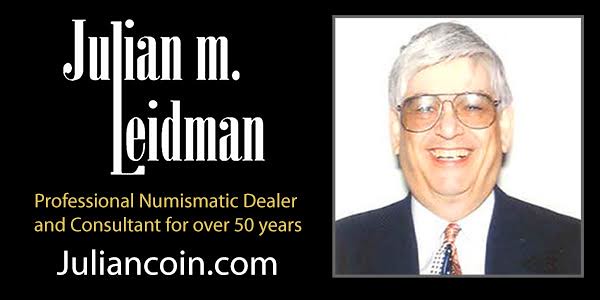
NEW BOOK: MONEY TALKS
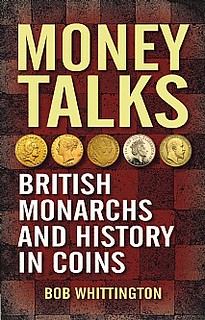 We have just published Money Talks, British Monarchs and History in Coins by Bob Whittington.
We have just published Money Talks, British Monarchs and History in Coins by Bob Whittington.
Money Talks traces British history through the one thing that dominates our lives – hard cash. It looks at what was happening to the country as it emerged from its early history and royal struggles with cash flow problems to modern times, and sees what the thrymsa, the penny, and the groat have to tell us about those times and the people who used them.
It has been used to barter and bribe, to pay a king’s ransom, been an object of pride and a symbol of power and courage. Money Talks demonstrates how monarchs down the centuries have used hard cash to fund wars, maintain their lifestyles and portray their image to prove their position or legitimatise dubious claims to the throne.
Although money now moves virtually at the swipe of an electronic card, it has survived for more than 2,500 years, rising and falling in value, changing in shape and size, and merging into a continent-wide single unit. The coin continues to talk, telling its own unique tale about the lives we lead, the challenges we face, and the dreams we are trying to turn into reality.
For more information, or to order, see:
Money Talks
British Monarchs and History in Coins
(http://www.whittlespublishing.com/Money_Talks)
NEW BOOK: SCHER COLLECTION OF PORTRAIT MEDALS
 The Pursuit of Immortality: Masterpieces from the Scher Collection of Portrait Medals
The Pursuit of Immortality: Masterpieces from the Scher Collection of Portrait Medals
This catalogue, published to accompany an exhibition of the same name, includes highlights from the Scher Collection, arguably the world’s most comprehensive and significant private collection of portrait medals. The collection, part gift and promised gift to the Frick, dates from the fifteenth through the nineteenth century and comprises extraordinary examples from Italy, Germany, France, the Netherlands, and England. An essay by Aimee Ng traces the development of the art of the medal, providing an elegant and concise introduction to the topic.
Author: Aimee Ng
Publisher: The Frick Collection in association with D Giles Limited
Hardcover, 7 ⅛ × 7⅛ in., 64 pages, 40 color illustrations
Price: $19.95
Member Price: $17.95
For more information, or to purchase, see:
The Pursuit of Immortality: Masterpieces from the Scher Collection of Portrait Medals
(http://www.frick.org/shop/exhibition_catalogues/scher/medals)
 The portrait medal is one of the most important artistic inventions of the Renaissance and an essential part of the history of portraiture in western art. Inspired by ancient coins, medals were created primarily to commemorate individuals and events. Typically, the front (called the obverse) bears a portrait of an individual, and the back (or reverse) presents associated imagery and text, such as a heraldic device, personal allegory, emblem, or narrative scene. All kinds of artists produced medals — painters, printmakers, sculptors, and gold- and silversmiths. The art form flourished across Europe in the fifteenth through the nineteenth century. As it did, the making, form, and function of medals varied widely.
The portrait medal is one of the most important artistic inventions of the Renaissance and an essential part of the history of portraiture in western art. Inspired by ancient coins, medals were created primarily to commemorate individuals and events. Typically, the front (called the obverse) bears a portrait of an individual, and the back (or reverse) presents associated imagery and text, such as a heraldic device, personal allegory, emblem, or narrative scene. All kinds of artists produced medals — painters, printmakers, sculptors, and gold- and silversmiths. The art form flourished across Europe in the fifteenth through the nineteenth century. As it did, the making, form, and function of medals varied widely.
The Scher Collection is the finest and most significant of its kind in private hands. Stephen K. and Janie Woo Scher have generously given a substantial portion of their collection — about 450 medals — to The Frick Collection, the largest gift in the museum’s history. The Pursuit of Immortality celebrates this gift, presenting about 130 masterpieces from the collection.
 The exhibition traces the story of the portrait medal from its beginnings in Renaissance Italy through its histories in various European regions, including present-day Germany, France, England, and the Netherlands. A small but significant grouping illuminates the art of the medal in Russia, Scandinavia, and North America. Because national borders have changed substantially since the fifteenth century — Italy, for example, became a nation only in 1861 — the exhibition’s geographic organization belies a complex history of these regions and their medals.
The exhibition traces the story of the portrait medal from its beginnings in Renaissance Italy through its histories in various European regions, including present-day Germany, France, England, and the Netherlands. A small but significant grouping illuminates the art of the medal in Russia, Scandinavia, and North America. Because national borders have changed substantially since the fifteenth century — Italy, for example, became a nation only in 1861 — the exhibition’s geographic organization belies a complex history of these regions and their medals.
A selection of complementary works of art from the Frick’s holdings illustrates the intersections between the medal and other arts and honors the medal as a triumph of sculpture on a small scale.
To read the complete article, see:
The Pursuit of Immortality: Masterpieces from the Scher Collection of Portrait Medals
May 9, 2017 to September 10, 2017
(http://www.frick.org/exhibitions/scher)
NEW BOOK: AUSTRIAN MEDALLIST CARL RADNITZKY
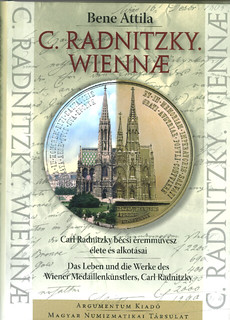 Bene Attila: C. RADNITZKY . VIENNAE – The Life and Works of Austrian Medallist Carl Radnitzky
Bene Attila: C. RADNITZKY . VIENNAE – The Life and Works of Austrian Medallist Carl Radnitzky
Based on some Central-European public and private collections, and the materials of international auctions, the author describes the works of Austrian medallist, C. Radnitzky (1818–1901). More than 220 researched medals made by Radnitzky (which means around 650 variants in type, material, size and weight), introduced in a catalogue without value indication according to the time sequence of their production.
The catalogue contains the marked and unmarked works of the artist, connected mainly to the former countries of the Austro-Hungarian Monarchy. Also, naming the occurrence of individiul pieces in the previously published literature, like Brettauer, Donebauer, Hauser, Horsky, Montenuovo, Wurzbach-Tannenberg. Indication is given to the connections of the medals of the minting dies preserved in the Kunsthistorisches Museum in Vienna (Stempel-Sammlung). The description of the medals and their entire metrological data are also the part of the book.
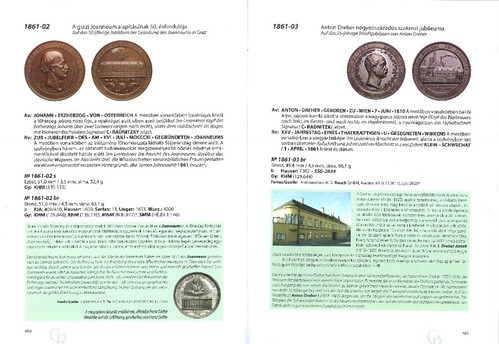
The book is published in a joint Hungarian–German venture, with colour illustrations, hard cover, and the volumes are individually numbered. The buyers receive their book with a dedication to their name. The book contains 320 A/4-sized pages, plus two fold-out data sheets!
ISBN 978-963- 446-749- 6
Price: 80 Euro

BRONX COIN CLUB CELEBRATES 1000TH MEETING
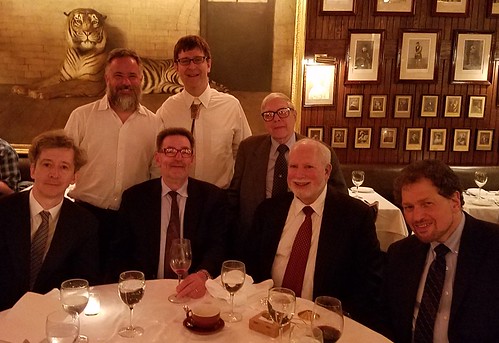
Members of the Bronx Coin Club celebrated the Club's 1000th monthly meeting at Keens Steakhouse in Manhattan. The Bronx Coin Club was founded in 1933 by Otto T. Sghia and has met each month since that time. The club currently has 16 members.
Joining the club was renowned American artist Joel Iskowitz (first row, second from left), who is designing a medal for the Club to commemorate the occasion. The medal will depict the first Bronx settler, Jonas Bronck, who signed a peace treaty with native Americans in 1642. The Bronx is named after him.
Front Row: Normand Pépin, Joel Iskowitz, Jay Galst, David Menchell.
Back Row: Jeremy Wallace, Ed Snible, Tom Tesoriero.
Keens Steakhouse, 26 April 2017
SPMC PARTNERS WITH NEWMAN PORTAL
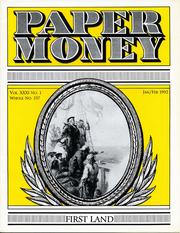 Paper Money, the journal of the Society of Paper Money Collectors (SPMC), is now available on the Newman Portal for the years 1962 – 2011. Currently issued six times per year, Paper Money covers the gamut of currency issues, including obsoletes, National Bank notes, federal currency and more. Articles are written to a high standard and often incorporate archival research published nowhere else.
Paper Money, the journal of the Society of Paper Money Collectors (SPMC), is now available on the Newman Portal for the years 1962 – 2011. Currently issued six times per year, Paper Money covers the gamut of currency issues, including obsoletes, National Bank notes, federal currency and more. Articles are written to a high standard and often incorporate archival research published nowhere else.
Paper Money can be searched on the Newman Portal by using the advanced search and entering “Society of Paper Money Collectors” in the author box. A search on “Rittenhouse,” for example, reveals an interesting forgery. This thousand-dollar issue of the Bank of the United States, c, 1840, depicts David Rittenhouse in the lower left corner. Fakes are identified by the serial number (8894), and so to Rittenhouse, first Director of the U.S. Mint, goes the honor of being associated with one of the most often forged notes in the United States.
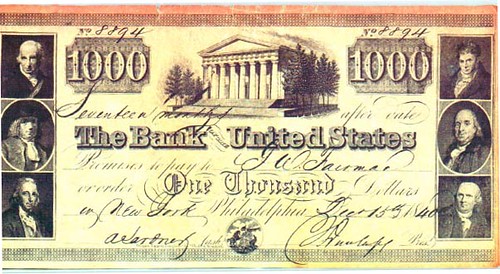
The Newman Portal wishes to thank the SPMC, and president Shawn Hewitt, for their assistance with this project.
Link to Paper Money on the Newman Portal:
https://nnp.wustl.edu/library/publisherdetail/521016
Link to advanced search on Newman Portal:
https://nnp.wustl.edu/Library/AdvancedSearchForm
Link to Richard Giedroyc article on 1840 vinegar notes featuring Rittenhouse:
https://nnp.wustl.edu/library/book/533238?page=77
1913 LIBERTY NICKEL FIRST SEEN IN 1919
 On a rainy afternoon in October
1919 Samuel W. Brown posed
for a photograph that could be
a key to the sketchy history
of the famed 1913 Liberty
Head nickel, of which five
specimens are known.
Brown is shown
standing on the porch
of the Philadelphia
Mint – at the left
end of the seventh
row of those posing.
The photo was taken
less than two months
before he exhibited
an example of the rarity
to prominent numismatists
of the Chicago
Coin Club at its meeting
on Dec. 3, 1919. (That
meeting, as will be shown
here, is now the site of the earliest
known display of the nickel
that can be supported through a
contemporary report – replacing the
showing at the next year’s convention in
that regard.)
On a rainy afternoon in October
1919 Samuel W. Brown posed
for a photograph that could be
a key to the sketchy history
of the famed 1913 Liberty
Head nickel, of which five
specimens are known.
Brown is shown
standing on the porch
of the Philadelphia
Mint – at the left
end of the seventh
row of those posing.
The photo was taken
less than two months
before he exhibited
an example of the rarity
to prominent numismatists
of the Chicago
Coin Club at its meeting
on Dec. 3, 1919. (That
meeting, as will be shown
here, is now the site of the earliest
known display of the nickel
that can be supported through a
contemporary report – replacing the
showing at the next year’s convention in
that regard.)
Brown was part of a large tour group from the 1919 Philadelphia ANA convention when the aforementioned photo was taken. The convention was held Oct. 4-8, 1919, at the Academy of Fine Arts in Philadelphia. The Bellevue-Stratford hotel served as the convention headquarters.
Greeting the show goers at the Philadelphia Mint, on Oct. 6, was Brown’s former boss, Dr. T.L. Comparette, head the Mint Cabinet, which was home to the nation’s coin collection. Comparette is pictured at the far right end of the same row as Brown.
This was the official ANA convention photo, which could later be purchased, unmounted, for $1 per copy from Henry Chapman. It was reproduced on p. 431 of the November 1919 issue of the ANA’s journal, The Numismatist. It also appeared in the November 1919 issue of B. Max Mehl’s Mehl’s Numismatic Monthly.
Significantly, shortly after the Philadelphia Mint tour, Brown’s first advertisement offering to buy a 1913 Liberty Head nickel, “in proof condition, if possible,” was placed in the December 1919 issue of The Numismatist. More significantly, however, is that he apparently had one of the coins within days of his first advertisement going to press (and likely prior to this happening).
Creating a rarity
In 1913 the Mint adopted James Earle
Fraser’s design for the five-cent piece.
Fraser’s Indian Head replaced the Liberty
Head design, by Charles Barber. No 1913
nickels with the Liberty Head design
were to be struck. But today, five are
known bearing that date. They are great
rarities, selling in the millions of dollars
at auction.
Most writers believe they were clandestinely created by Samuel W. Brown, a Mint employee at the time of design change, who in 1920 showed up at the ANA convention in Chicago and left on display one of the nickels.
The exact date of the striking of the five known coins has long been in contention, so is whether they are actually proofs and whether or not Brown had an accomplice in the minting of the coins, who had access to the necessary dies.
Some have argued that the coining could have occurred more contemporaneous with its exhibition at the 1920 convention; others believe the dies for making such coins would have been destroyed long prior to that, necessitating that coins were minted circa late 1912 or early 1913.
A question of appearances
Most who have
looked at the background
of the 1913 Liberty Head
nickel have come to assume
that the hobby first learned of
this rarity at the 1920 American
Numismatic Association convention
in Chicago. There were rumors
of earlier showings, but contemporary
written record has been evasive, leaving
until now the 1920 convention as the earliest
known mention of the 1913 Liberty
Head nickel in print from the time period,
other than Brown’s advertisements.
However, apparently hidden in plain sight was such an earlier reference. It appeared rather matter-of-factly in the February 1920 issue of The Numismatist, which provided a detailed summary of the 10th monthly meeting of the newly formed Chicago Coin Club.
The meeting was held on Wednesday, Dec. 3, 1919, at the Hotel Sherman in Chicago, where Brown (who was listed as being in attendance) was one of 10 new members entered into the CCC’s ranks.
Those elected to membership, as noted in The Numismatist’s recap of the meeting, were: “Frank A. Johnston, G.W. Tracey, D.A. French, Frank Hansen, Virgil Brand and Roger Graham of Chicago; H.O. Granberg, Oshkosh, Wis.; Samuel W. Brown, North Tonawanda, N.Y.; J.G. Gunderson, Aneta, N.D., and E.D. Bushnell of New York.” More significantly, many brought exhibits to the meeting, including Brown, of whose exhibit it is written on p. 62 of that issue the following:
“By Mr. S.W. Brown: Proof nickel of 1913, of the old type. Proof nickels are not supposed to have been struck during that year.”
If reported and transcribed correctly, as submitted by CCC secretary R.E. Davis, here is the earliest published reference to the 1913 Liberty Head nickel currently known.
It would seem from the way the Dec. 3 CCC meeting summary is presented in The Numismatist that Brown had only one 1913 Liberty Head nickel with him at that time, though it doesn’t mean he didn’t have or know the whereabouts of the remaining four.
Of special note is that the Dec. 3, 1919 date for the meeting is only two days after Brown’s first advertisement offering to buy the coins was published in the December 1919 issue of The Numismatist and before that issue was mailed to ANA members.
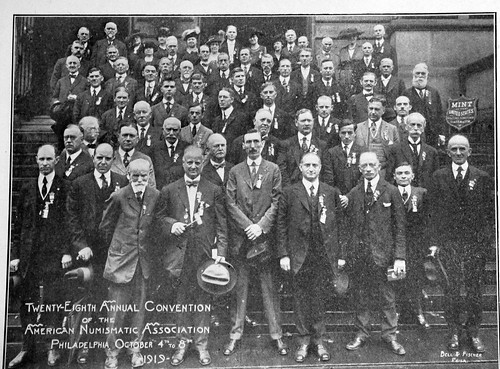
Bob adds:
The images come from the November 1919 issue of Mehl's Numismatic Monthly, p. 139. Other notables include: Standing next to Brown is Edgar Adams. At far left in the bottom first row is F.G. Duffield. T.L.Comparette is in the top row at far right (next to the lady with the big hat - Mrs. Henry Chapman). The guy with the gavel in first row is outgoing ANA president Carl Wurtzbach.
The complete list is in The Numismatist, on p. 430 of the November 1919 issue.
To read the complete article, see:
http://www.numismaticnews.net/article/shadowy-rarity-1913-nickel-first-seen-1919-not-1920
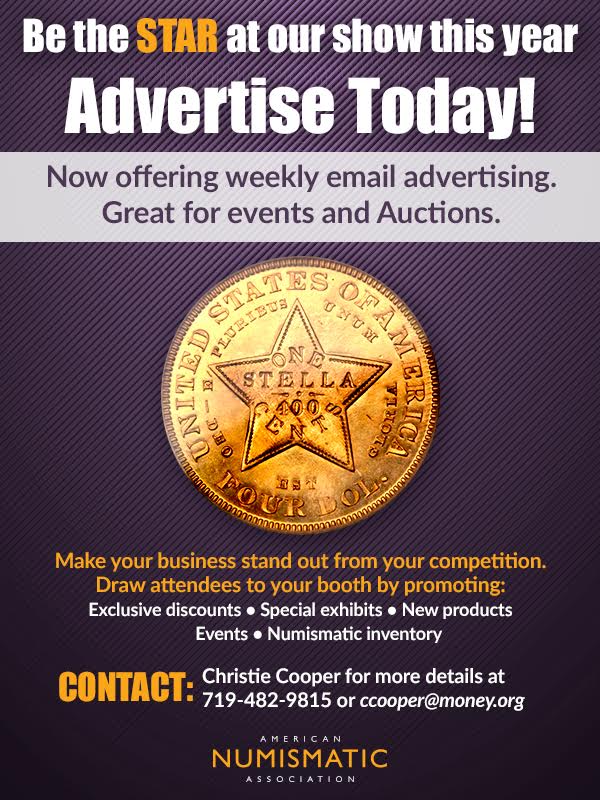
MYSTERY COIN: DIOCLETIAN ABDICATION NUMMUS
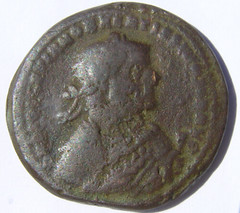
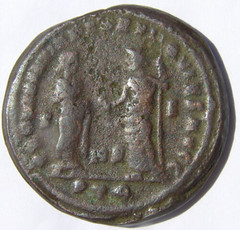
Paul Schultz of Pennsylvania writes:
I have a reasonble guess at that Washington State coin. In my old, single volume book by Sear, Roman Coins and their Values, it may be 3543, a Roman follis from soon after 305 AD. This is a Diocletian issue after his abdication.
The lettering isn't very clear due to corrosion, but I think the portions of the obverse I can read (after staring at it for a half hour) correspond well to that coin: D N DIOCLETIANO FELICISSIMO SEN AVG, and the letter count is about right. The reverse correlates well with: PROVIDENTIA DEORVM QUIES AVGG. The mint mark in the exergue is PTR, definitely the Trier (Germany) mintmark. Roman Imperial COins Vol 6 p208 has several variants.
It is not nearly as common as the Constantine Aes that sell for several dollars each, but is still not at all rare. My first guess is that a collector lost it recently since most verdigris is removed leaving a porous surface. Since it is not rare and the condition is much less than ideal, perhaps a child lost it coming home from a coin show with Dad.
Hugh Cloke writes:
I think your reader's mystery coin is an abdication nummus of Diocletian struck at the Roman mint at Cyzicus. The coin commemorates Diocletian's retirement in AD 305
The obverse legend reads D N DIOCLETIANO BAEATISSIMO SEN AVG, surrounding a bust of Diocletian wearing an imperial mantle, holding an olive branch in his right hand and a mappa in his left.
The reverse legend reads PROVIDENTIA DEORVM QVIES AVGG, surrounding images of Providentia, standing right, extending her right hand to Quies who is facing left, holding an olive branch in her right hand, while her left hand is leaning on a sceptre. The letters S-F appear on either side of the two figures. The mint mark is Kζ; PTR.
The coin is cataloged in RIC VI as 678 for Trier, although more recent scholarship attributes this type to Cyzicus where, it is suggested, dies prepared at Trier were copied by the engravers at Cyzicus who combined the PTR mint mark the Cyzics mark in the field between the figures of Providentia and Quies.
Best wishes,
Hugh Cloke
Georgetown College
Paul adds:
I looked carefully, and I am inclined to agree with BAEATISSIMO rather than FELICISSIMO. This makes it something of a hybrid between the old Sear (single volume) 3543 and 3542, which is not unusual since the Sear book contained representative examples, not every minor variation. This changes the obverse translation to something like Our Lord Diocletian Very Blessed Senior Emperor. The obverse inscription compared to pages 206- 208 of RIC 6 now correlates with their 6b rather than 6c variant.
Regarding the mint, Hugh is saying that the mint in Cyzicus (now in Turkey), copied Trier (Germany) dies including the Trier mint mark, and then added their own mint mark too, quite an oddity.
All of my references call the denomination a follis, not a nummus, which I thought came later in Byzantine times. I agree now with BAEATISSIMO. He is clearly more up to date than I am so I would concede that Cyzicus is more likely the real mint despite the Trier mint mark, with an interesting story behind those mint marks.
Hugh writes:
Nummus is the preferred term for these coins in modern scholarship. The term follis, which is found in most if not all older reference books such as Sear, actually refers to a bag of coins. We do not know how the Roman referred to these coins. For a discussion of the terms see: http://www.forumancientcoins.com/board/index.php?topic=78859.0 .
Paul writes:
It is, of course, an ancient Roman coin, which I really did not explicitly state in the description.
The bust of the Emperor shows him facing right, Laureate (wearing a wreath or laurels), holding a branch and mappa (mappa definition from David Sear site: originally the white napkin dropped by an emperor or magistrate as a starting signal at the Circus, in late Roman iconography it came to be a used as one of the principal attributes of the consuls, (therefore in this case showing that Diocletian also held the office of Consul)).
The reverse shows Quies and Providentia facing each other. Although the coin is not especially scarce, the inclusion of Quies, the personification of Quiet or tranquility is rather rare on any of the Roman coins. Pax would be much more typical, the personification of Peace. Providentia is the personification of foresight.
The inscriptions on both sides are unusually long for a Roman coin with a Latin inscription (but local coinage in Greek from the eastern areas of the empire are more often this long). My Latin vocabulary is rather poor beyond that used in typical coin inscriptions, and my Latin grammar is horrible.
The reverse proclaims something like the Providence of the Gods, The Quiet/Tranquility of (implying provided by) the Emperors. Anyone wishing to correct this is likely right. I wouldn't be surprised to find it for sale at an ancient coin dealer for $10-$40. The Roman Empire had mints all over the Roman world, and Treverorum (now Trier, Germany) was a fairly important one. PTR stands for the Treverorum mint, first office or section (P for Prima).
The reference to RIC means Roman Imperial Coinage, an 11 volume set of books on Roman coins that took several authors over 50 years to write. There is a more recent version of Roman Coins and their Values than the single volume version I cited, a new set of 5 volumes, but a beginner may wish to start with the less expensive and less voluminous 1988 single volume version.
We are talking about emperors, plural, because Diocletion found that it was very difficult for a single person to rule the vast Roman Empire, so he devised a system in which there were 2 senior emperors and 2 junior emperors, dividing the work between them. Standard references on Roman emperors or Diocletian will explain this in much greater detail.
Another possibility occurs to me for the coin's presence in Washington, that is someone may have planted it intentionally where metal detectorists might search. It could have been a joke, or someone trolling in hope the finder thinks this is proof that ancient aliens sent Romans to the Pacific Northwest, or even a coin collector trying to interest a metal detectorist in something very different from 19th and 20th century US coins. If the latter, I hope he succeeds.
To read the earlier E-Sylum article, see:
NOTES FROM E-SYLUM READERS: JULY 16, 2017 :
Mystery Coin Found in Seattle
(http://www.coinbooks.org/v20/esylum_v20n29a12.html)
NOTES FROM E-SYLUM READERS: JULY 23, 2017
Lincoln Cent Fidget Spinner
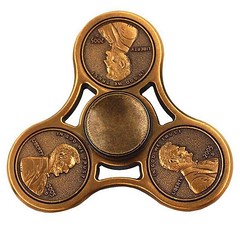
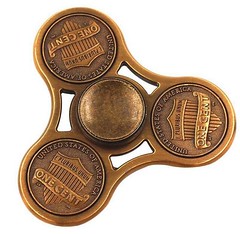
Gary Dunaier of Flushing, NY writes:
Regarding the money-themed souvenirs, here's something that may be of interest - a coin-themed fidget spinner.
Somebody has adapted a Lincoln cent for use as a fidget spinner design. It's obvious that whoever made it doesn't know anything about coins, because:
1) The obverse is a 2005-D, but the reverse is the shield design, which wasn't adopted until 2010. A real 2005-D cent would have the Lincoln Memorial reverse.
2) The orientation, if the pictures are any indication, is medal and not coin.
For whatever it's worth, I only have one fidget spinner, which I bought out of curiosity because the seller was only asking $3.00 for them. I don't need any more - actually, I think fidget CUBES are better for stress relief, because with a cube you only need one hand to discreetly fidget your worries away. But if these were dated 2017, I'd have gotten one, for no other reason than I think they're cool.
To read the complete eBay lot description, see: USA Cent Penny Triangle Fidget Hand Spinner Desk Toy EDC Stuffer Kids Adult (http://www.ebay.com/itm/USA-Cent-Penny-Triangle-Fidget-Hand-Spinner-Desk-Toy-EDC-Stuffer-Kids-Adult/232344919118)
To read the earlier E-Sylum articles, see:
MONEY-THEMED SOUVENIRS
(http://www.coinbooks.org/v20/esylum_v20n28a33.html)
SPINNER TOKENS
(http://www.coinbooks.org/v20/esylum_v20n08a23.html)
Chinese Bamboo Tally Sticks
A reader writes:
Here is a sales sheet on both wood and copper Chinese Tallies (I refer to these as Money Sticks), along with a Liganda Spear Money. Many countries, business associations etc used these, but Chinese types lasted until the most recent of times (transactions were a one sided affair, so only a single stick representing a value was needed, like a good-for). These Chinese sticks survived, not for their monetary value, but as construction material (primarily insulation) in older homes.
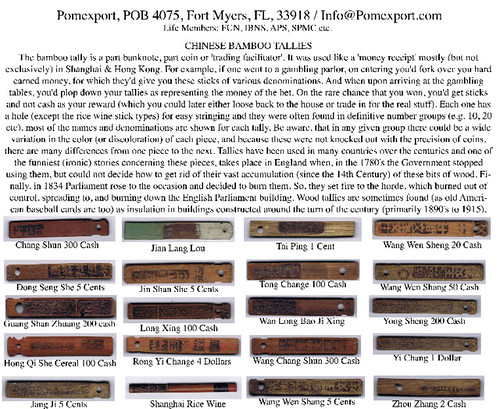
To read the earlier E-Sylum article, see:
MEDIEVAL TALLY STICKS AND HOW THEY WORKED
(http://www.coinbooks.org/v20/esylum_v20n29a26.html)
Harold Don Allen
 Pete Smith writes:
Pete Smith writes:
In answer to Kellen Hoard's question, H. Don Allen is Harold Don Allen. He is mentioned briefly in American Numismatic Biographies on the Newman Numismatic Portal. Because he is Canadian, he did not get the attention that would be paid to an American author.
I have quite a collection of personal tokens issued by Allen.
To read the earlier E-Sylum article, see:
KELLEN HOARD'S 2017 ANA SUMMER SEMINAR REPORT
(http://www.coinbooks.org/v20/esylum_v20n29a21.html)
Norman Rockwell Coin Collector Print
Ken Berger writes:
Last week's E-Sylum mentions the Norman Rockwell Coin Collector print. I too have a copy of this print which I inherited from my uncle, Melvin Roland. Unlike many collectors, my uncle kept any and all material related to any numismatic item he purchased or acquired.
This print was a gift to members of the Franklin Mint Collectors Society and was not available for sale. I am attaching a scan of the original letter which accompanied the print and a scan of the brochure about the print.
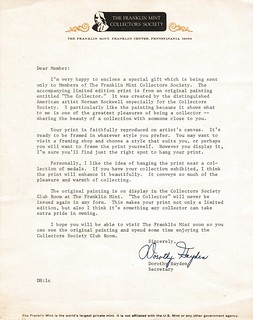
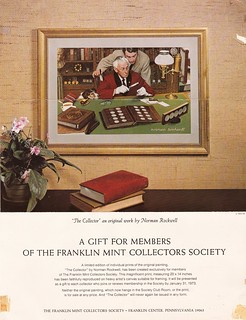
To read the earlier E-Sylum article, see:
WAYNE'S NUMISMATIC DIARY: JULY 16, 2017
(http://www.coinbooks.org/v20/esylum_v20n29a22.html)
That Math-y Stuff
Paul Hybert of Chicago writes:
 I finally read through a backlog of E-Sylum issues, and I question part of the piece on Universale Argentum.
I finally read through a backlog of E-Sylum issues, and I question part of the piece on Universale Argentum.
In a contemporary newspaper article, the value of a talent was calculated as $4.07, by adding
$4.14 for one-fifth of an ounce of gold ($20.07 per ounce)
+ .03 for four-fifths of an ounce of silver ($.67 per ounce)
------
$4.17
But the total value shown in the newspaper article is $4.07, so there is an error in the original math, the newspaper editing, the typesetting of the newspaper, or the recent OCR step.
There is a second error -- in calculating the value of four-fifths of an ounce of silver, .67 times .8 equals .536, and not .03. No idea in which of the above steps this error occurred.
Paul adds:
I spotted a further oops, in the valuation of the gold part! Multiplying $20.07 times 0.2 produces $4.014, not the $4.14 shown. But this calculation might not be wrong, as much as inappropriate: a gold price of $20.70 per ounce WOULD result in a fifth of an ounce being valued at $4.14. So the listed per-ounce price of gold and silver must be added to the list of potential sources of error.
To read the earlier E-Sylum article, see:
MORE ON 1896 ARGENTUM UNIVERSALE COINS
(http://www.coinbooks.org/v20/esylum_v20n28a10.html)
And More Math-y Stuff
Barry Benjamin writes:
The distances are different in this Guinness Book of World records account for the farthest to blow a coin.
What
4.947 CENTIMETRE(S)
Where
UNITED STATES (JAMAICA, NEW YORK,YMCA GYMANSIUM)
When
09 OCTOBER 2010
The farthest distance to blow a coin is 4.947 m (16 ft 2.76 in) and was achieved by Ashrita Furman (USA) in the gymansium of the Jamaica YMCA in Jamaica, New York, USA on 9 October 2010.
To read the earlier E-Sylum article, see:
RECORD-SETTING COLLECTOR WANTS UAE MUSEUM
(http://www.coinbooks.org/v20/esylum_v20n28a21.html)
Critical Thinking About Internet Sources
Bob Leonard writes:
The internet has greatly facilitated research (though I visited both the National Archives and the ANS in person when researching Forgotten Colorado Silver), but researchers must never fall into the habit of using secondary information. For all the Census information I consulted, for example, in every case I checked the actual image and did not rely on any website's transcription (I found some real howlers in them). I suppose that this is elementary and unworthy of notice, but in a day when I see Wikipedia, of all things, being cited as an authority, and some people believing that anything you find on the internet is the equal of an exhaustively-researched and vetted book, maybe it is worth mentioning.
How does this relate to the Newman Numismatic Portal? For primary source information like auction catalogs, not at all. But now many club newsletters are scanned, and the little articles in them may be based on old and incomplete information. Both will come up in an NNP search, however. Not everything up on the NNP is of equal value.
To read earlier E-Sylum articles, see:
ONLY QUARTERS AND HALF EAGLES COINED IN 1815
(http://www.coinbooks.org/esylum_v19n36a16.html)
NOTES FROM E-SYLUM READERS: MAY 14, 2017 : On Discerning Meaning From Numismatic Information
(http://www.coinbooks.org/v20/esylum_v20n20a09.html)
BOOK REVIEW: FORGOTTEN COLORADO SILVER
(http://www.coinbooks.org/v20/esylum_v20n29a05.html)
More on Coin-Embedded Lucite Toilet Seats
A Flroida reader writes:
And as far as the toilet seat - I've seen several, with one recently at a shop here in Florida, where someone made an honest attempt at gouging the coins out of the toilet seat (with no success, other than ruining the look of the areas where the extraction was attempted).
To read the earlier E-Sylum article, see:
Coin-Embedded Lucite Toilet Seat
(http://www.coinbooks.org/v20/esylum_v20n29a20.html)
Naperville Neighborhood Artworks
Bruce Perdue writes:
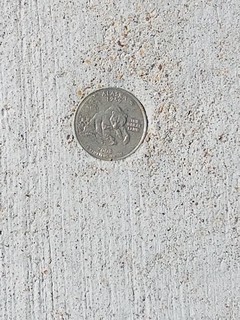 I was much amused to see that Luther Herbert Whitt was buried in Arroyo Grande, California. My daughter lives right across from the that cemetery in Arroyo Grande! I was there at the end of June and walked around the edge of the cemetery with my daughter and new grandson. Small world!
I was much amused to see that Luther Herbert Whitt was buried in Arroyo Grande, California. My daughter lives right across from the that cemetery in Arroyo Grande! I was there at the end of June and walked around the edge of the cemetery with my daughter and new grandson. Small world!
I am also enclosing a couple of pictures I took Wednesday while completing my daily 10K steps. I was walking in Naperville, IL when a coin related item caught my eye and several book related items as well. There are always some art works on display in the downtown which is still very vital and always full of people. The benches are used for photo opportunities.
The Alaska quarter was embedded in a new stretch of sidewalk in the downtown area.
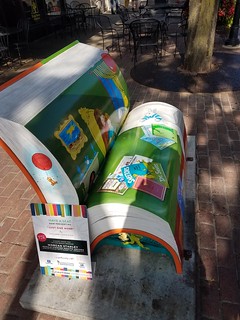
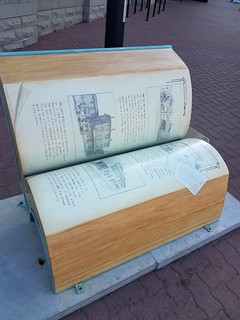
To read the earlier E-Sylum article, see:
LUTHER HERBERT WHITT (1903-1977)
(http://www.coinbooks.org/v20/esylum_v20n29a16.html)
More Math-Y Stuff: Identical Serial Number $1 Bills
Burton Strauss writes:
Regarding “Query: Identical Serial Number $1 Bills”, the why were they “slabbed” is probably because somebody had the pair and thought it was really cool and wanted to preserver it. As to the probability…
This is another example of “the birthday paradox”: the chance of finding somebody in the room with YOUR birthday is the assumed 1 in 365.24, the chance of finding any two people in the room with the same birthday is much higher (see http://www.npr.org/templates/story/story.php?storyId=4542341 and https://en.wikipedia.org/wiki/Birthday_problem). In fact, with just 23 people, the probability is over 50%.
When it comes to bills, similar problem, just a large number of ‘dates’. The WikiPedia article has the general problem formula (https://en.wikipedia.org/wiki/Birthday_problem#Cast_as_a_collision_problem) [where n is the # of bills examined and d is the possible values].
In order to calculate the probability, we need to extend the formula for “identical” items (probability handles this for, say pulling red and black marbles from a bag where you can’t distinguish a given red marble from any other red marble.
And, we need “d” – the number of possible bill serial numbers, which is much harder problem than you think.
For US$1 bills (which haven’t been redesigned and so use the traditional serial number format), there are 12 first letters (the individual Federal Reserve Banks or Districts), eight digits and a final letter. If you assume they are all used, there are 12 * 100,000,000 * 26 possible bills per series, or 31,200,000,000 bills.
However, every value is never printed. The best site I know of that tracks this is http://www.uspapermoney.info/.
Typically, the numbers only run up to 96,000,000 and never has the BEP printed all 26 letters for even a single Federal Reserve Bank. Visit here: http://www.uspapermoney.info/general/number.html for more than you want to know about the numbering scheme.
The site tracks details about everything that has been printed from the BEP’s own published reports. For example, for Series 1993 $1 (http://www.uspapermoney.info/groups/f1993_sB.txt) the highest letter used was K (only for San Francisco, e.g. L…K) followed by H for New York (B…H) and Atlanta (F…H). For series 2003 $1 (http://www.uspapermoney.info/groups/f2003_sB.txt), L…N and F…L are the maximums, with the additional complication that every block is not fully printed.
At this point, I’ll exit (followed by a bear) and leave the problem to somebody better at probability math than I am.
To read the earlier E-Sylum article, see:
NOTES FROM E-SYLUM READERS: JULY 16, 2017 : Query: Identical Serial Number $1 Bills
(http://www.coinbooks.org/v20/esylum_v20n29a12.html)
The Original Sculpt for the Lincoln Cent
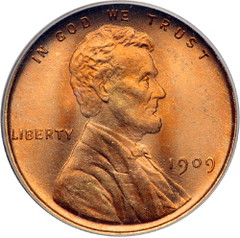 The Lincoln Cent was designed and the sculpt produced by the Medallic Art Company for the U.S. Mint. The original sculpt for the penny is still held in the archives of the Medallic Art Company.
The Lincoln Cent was designed and the sculpt produced by the Medallic Art Company for the U.S. Mint. The original sculpt for the penny is still held in the archives of the Medallic Art Company.
To read the complete article, see:
http://www.medallic.com/
Chinese Coin Production in 1989
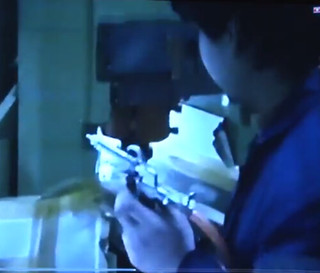
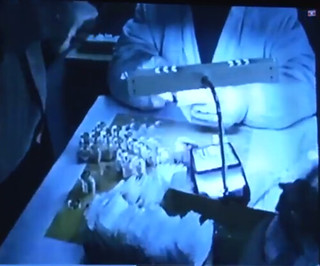
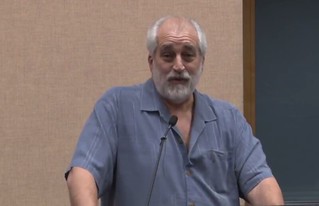 During the Tiananmen Square demonstrations commemorative coins were still being produced in China. Fred Weinberg was there and has never before been seen video during that include scenes of the protestors.
During the Tiananmen Square demonstrations commemorative coins were still being produced in China. Fred Weinberg was there and has never before been seen video during that include scenes of the protestors.
To view the complete video, see:
CoinTelevision: Tiananmen Square Protests and Chinese Coin Production in 1989. VIDEO: 19:08
(https://www.youtube.com/watch?v=HwAPuLIOFNA)
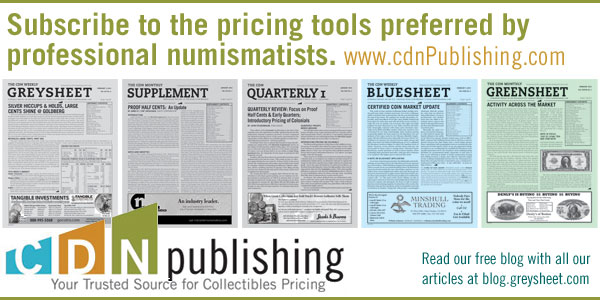
CARSON CITY COIN PRESS NO. 1 BACK IN ACTION
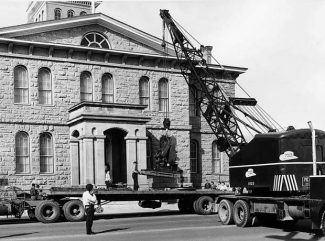
Coin Press No. 1 Redelivered in 1958
In February 1870, the sparkling new steam-powered coin press inside the U.S. Mint in Carson City struck its first coin, a Seated Liberty silver dollar with a crisp CC mint mark.
One hundred and forty seven years, millions of dollars, a couple of road trips and a healthy dose of serendipity later, Press No. 1 is still pressing metal into medallions in the same building in which it started.
"It's still in operation, still doing what it was intended to do," said Myron Freedman, director of the Nevada State Museum, which occupies the former U.S. Mint building. "We are pretty proud to be able to use it for its historically intended purpose."
After being down for several months for repairs, the press is expected to be back in operation in September, pressing medallions for the public's view and purchase — but with a variation. The medallions the press will produce will be smaller, 30 millimeters, than the silver dollar-size of past years.
The change is being made at the urging of a coin press consultant (structural engineers) from the Oakland, Calif.-based company that repaired the 12,000-pound press, from a restoration specialist at the Nevada State Railroad Museum and from independent analysts. They say the striking pressure required to imprint designs onto the blank coins — between 150 and 170 tons — is more than the 147-year-old press can handle. Switching to smaller medals, about half dollar sized, can be done with less strike pressure (a maximum of 110 tons) and therefore, less stress on the machine. Decreasing the tonnage will aid in the preservation of the press.
Finding replacement parts for the machine is difficult to impossible and in many cases the parts, and often the tools to remove and replace them, have to be fabricated from scratch. It also creates a dilemma for historians.
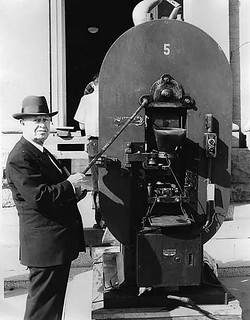
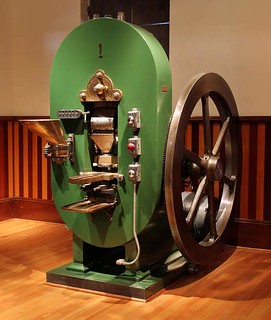
Left: Judge Clark J. Guild, founder of the Nevada State Museum
Right: Coin Press No. 1 today
"Our No. 1 priority as a museum is to protect the artifact," Freedman said. "We love being able to produce these medallions and to share that process with the public, but we also must recognize this is an important artifact in Nevada's history."
Freedman said historical research has shown the press, which was built in 1869 by Morgan &amo; Orr in Philadelphia, was designed to press at a much-lower tonnage than the 200 tons it operated at in its early years. In 1878, it suffered a catastrophic failure, a cracked arch, which put it out of commission for a time. Machinists at the local shop of the Virginia &amo; Truckee Railroad repaired it, and proud of their handiwork, replaced the original brass plate bearing the name Morgan &amo; Orr with their own.
Between 1870 and 1893, the Carson City Mint produced nearly $50 million (face value) of gold and silver coins, including gold double eagles ($20) and eagles ($10), half eagles ($5), silver dollars, half dollars, quarters, dimes and 20-cent pieces.
Today, coins with the CC Mint mark are highly prized by collectors and among the most valuable in the collecting world. An 1873 Carson City dime with no arrows — the only one of its kind known to still exist — sold at auction for $1.8 million in 2012.
The Carson City Mint ceased coin production in 1893 and the presses were removed in 1899. Press No. 1 was moved to the Philadelphia Mint, where it was remodeled in 1930 to operate with electric power. In 1945, it was transferred to the San Francisco Mint and renumbered "5" to correspond with its place in the coining department there.
In 1955, when all coin production was temporarily halted at the San Francisco Mint, the old press was targeted to be scrapped. If not for an eagle-eyed Oakland newspaperman who was also an avid Carson City Mint coin collector by the name of Frederick Monteagle, the press might have ended up on the scrap heap of history.
"He's the guy in 1958 who sent word to Nevada that they were scrapping the press," Goe said. "We owe him a big debt of gratitude."
With Monteagle acting as the middleman, Nevada State Museum founder Clark J. Guild and the museum board of trustees were able to buy the press for the state for $225 and it returned to its original home inside the Nevada State Museum.
One of the most memorable days for Nylen and longtime volunteer and coiner Ken Hopple, was in 2006, when commemorative coins were minted to coincide with the release of the Nevada state quarter.
A huge crowd assembled at the museum on that cold January day to acquire one of the newly minted "Spirit of the West" medallions, purchasing them as soon as they left the press.
Being able to see the historic press in action is something unique for visitors to the museum, Freedman said, and something the museum wants to continue.
"Thousands of visitors have been delighted to see the press in operation during demonstrations given by volunteer and local favorite Ken Hopple, and to purchase medallions in the museum gift shop," Freedman said.
To read the complete article, see:
Historic coin press returning to operation at Nevada State Museum
(http://www.nevadaappeal.com/news/local/historic-coin-press-returning-to-operation-at-nevada-state-museum/#)
To read the complete article, see:
Historic Coin Press Returning To Operation At Nevada State Museum
(http://carsonvalleytimes.com/2017/07/20/historic-coin-press-returning-to-operation-at-nevada-state-museum/)
To read the earlier E-Sylum articles, see:
MEDAL STRUCK ON CARSON CITY COIN PRESS NO. 1
(http://www.coinbooks.org/esylum_v07n16a19.html)
CARSON CITY MINT STRIKES RAILROAD "COIN"
(http://www.coinbooks.org/esylum_v08n46a17.html)
CARSON CITY MINT PRESS #1 STRIKES NEW MEDALS
(http://www.coinbooks.org/esylum_v10n40a23.html)
ARTICLE HIGHLIGHTS HISTORIC COIN PRESS NO. 1
(http://www.coinbooks.org/v20/esylum_v20n27a14.html)
2017 DENVER ANA CONVENTION EVENTS
Collector Exhibits
Paul Hybert writes:
The Collector Exhibits Area at the ANA's "World's Fair of Money" in Denver has a wide range of exhibits for your enjoyment. Use the online Exhibit Guide, located at http://www.chicagocoinclub.org/events/2017/ana/ex/all_by_cl.html to see a list of the exhibits, arranged over 18 different exhibiting classes. Look for a few exhibits ahead of time, or drop by and look at them all!
Among the expected exhibits are: a complete set of medals from the Society of Medallists, some Carnegie Hero medals, and two exhibits on the upcoming solar eclipse.
This online Exhibit Guide will be updated with corrections and changes so that the final version will list all exhibits that are present when the area opens to the public on Tuesday.
We are conveniently located between the Treasury Department's booth and Allen Berman's booth.
- Matte Proof Lincoln Cents 1909 to 1916
- The Women Who Signed Confederate Treasury Notes
- A Type Set of Gold Dutch-Israeli Fantasy Coins
- Great American Eclipse
- Colorado Beer Tokens
- Tim, Redbacks, and the Third Degree Knicker Pie Eater’s Club
- The Baghdad Shilling
- Local Currency
- "Octopus-Men” Coins
- Great Beards on Coins
- North American “Horsecar” Tokens
Numismatic Friends of Sherlock Holmes Dinner
 The Fourth Garrideb will hold its Numismatic Friends of Sherlock Holmes dinner at 7 p.m. on Wednesday, August 2, 2017 during this year’s American Numismatic Association’s World’s Fair of Money in Denver. Site of this year’s dinner will be the Blake Street Vault, located at 1526 Blake Street in lower downtown Denver.
The Fourth Garrideb will hold its Numismatic Friends of Sherlock Holmes dinner at 7 p.m. on Wednesday, August 2, 2017 during this year’s American Numismatic Association’s World’s Fair of Money in Denver. Site of this year’s dinner will be the Blake Street Vault, located at 1526 Blake Street in lower downtown Denver.
The Blake Street Vault is in a building erected in 1863, making it one of the oldest buildings in Denver. The restuarant features historic brick, tin ceilings, copper-topped bar, large wooden timbers, ghosts, and murals of a time long past. The vault in the basement is rumored to be haunted.
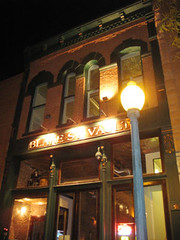 We are hoping for a larger crowd this year, as we are inviting the local group of Sherlockians to join us for good food, drink and conversation. There is no program during this event, and a few toasts will be offered. As has become a tradition, a souvenir will be issued to commemorate this entertaining event.
We are hoping for a larger crowd this year, as we are inviting the local group of Sherlockians to join us for good food, drink and conversation. There is no program during this event, and a few toasts will be offered. As has become a tradition, a souvenir will be issued to commemorate this entertaining event.
We do ask that you RSVP at your earliest convenience, but no later than Monday, July 31, in order to coordinate with the restaurant.
Greg adds:
Currently, we have over 25 attendees, which is more than double our largest turnout.
For more information and to RSVP, see:
Numismatic Friends of Sherlock Holmes Dinner Scheduled for Denver
(http://fourthgarrideb.com/2017/07/numismatic-friends-of-sherlock-holmes-scheduled-for-denver/)
Money Talks Presentation On the 1794 Dollars
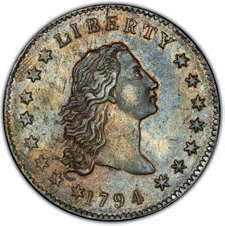 Len Augsburger, Joel J. Orosz, and David Finkelstein have pooled their research, and have collaborated on a Money Talks presentation regarding the 1794 Dollars. The presentation will be on Thursday, August 3rd, at 10:00 AM, in Room 501. David Finkelstein will be presenting images of never before published Mint documents that provide a definitive understanding of:
Len Augsburger, Joel J. Orosz, and David Finkelstein have pooled their research, and have collaborated on a Money Talks presentation regarding the 1794 Dollars. The presentation will be on Thursday, August 3rd, at 10:00 AM, in Room 501. David Finkelstein will be presenting images of never before published Mint documents that provide a definitive understanding of:
Multiple documents have been rediscovered at both the National Archives and Records Administration, and the Historical Society of Pennsylvania. These documents provide the contemporary evidence that answer the questions that have plagued numismatists for over 150 years.
2017 ORDERS &amo; MEDALS SOCIETY CONVENTION
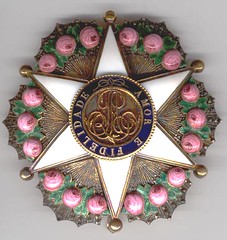 This year's annual convention of the Orders & Medals Society of America will be held in Grand Rapids,
Michigan from Thursday, August 10 until Sunday, August 13, about one week after the ANA convention.
Like the ANA's summer meeting, OMSA’s annual convention moves around the country enabling
regional members the opportunity of attending without traveling long distances.
This year's annual convention of the Orders & Medals Society of America will be held in Grand Rapids,
Michigan from Thursday, August 10 until Sunday, August 13, about one week after the ANA convention.
Like the ANA's summer meeting, OMSA’s annual convention moves around the country enabling
regional members the opportunity of attending without traveling long distances.
Known colloquially as OMSA (ahm-suh), members of the numismatic specialty group collect, research and preserve Orders, Decorations & Medals (ODMs), often generically called "decorations" by the general numismatic community. Items of interest include American and worldwide award medals of all kinds, such as Orders of Knighthood insignia, Decorations for gallantry or distinguished service and Medals for various types of service, both military and civilian. The vast majority of such award medals are of the portable variety, that is, medals that can be worn by the recipient, often on a uniform, though award medals of the non-portable variety, called table medals, are also enthusiastically collected. Once acquired, researching the history of the circumstances surrounding awarded medals plays an important part of the hobby and is a value-added aspect that cannot be overstated. Simply put, discovering the many fascinating tidbits of information about the medals and their recipients is great fun!
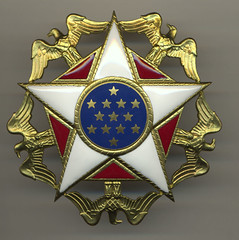
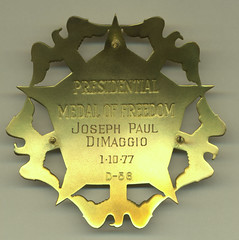
The OMSA convention is perhaps unique among specialist numismatic events insofar as it is a collector financed affair, the costs of the convention being paid by registered attendees, rather than primarily commercial bourse table holders, the latter method most common in the numismatic community. OMSA attendees pay a registration fee, this year $170 ($195 for registrations after July 1). For that amount, they have access to the convention floor for the four day bourse and exhibits, two days of seminars on faleristic (ODM related) topics, a donation auction, several excellent meals and cocktail parties, including a lavish annual banquet. As members subsidize the event, inexpensive bourse tables are available to any registered OMSA collector or dealer at only $60 each, enabling members of all means to participate as a seller. Exhibit tables are always available at no charge to the exhibiter.
The convention will be held at Hilton's Amway Grand Plaza Hotel, 187 Monroe Ave NW, Grand Rapids, MI 49503, (616) 774-2000 from August 10 through 13, 2017 for registered OMSA members. The convention bourse floor and always fascinating exhibits will also be open to non-registered OMSA members and the general public one day only, Saturday, August 12, 2014 from 9am to 5pm, for a modest admission fee. Those presently, or potentially, interested in learning about medal collecting are cordially and enthusiastically invited. For more information about OMSA, see www.omsa.org. Those wanting more information about medal collecting or attending monthly meetings of the Southern California Orders & Medals Society, should email Frank Draskovic, President, Southern California Orders & Medals Society at fdraskovic@hotmail.com.
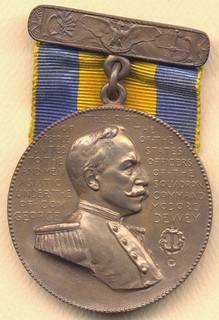
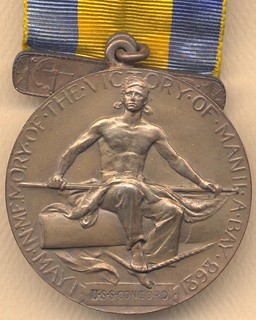
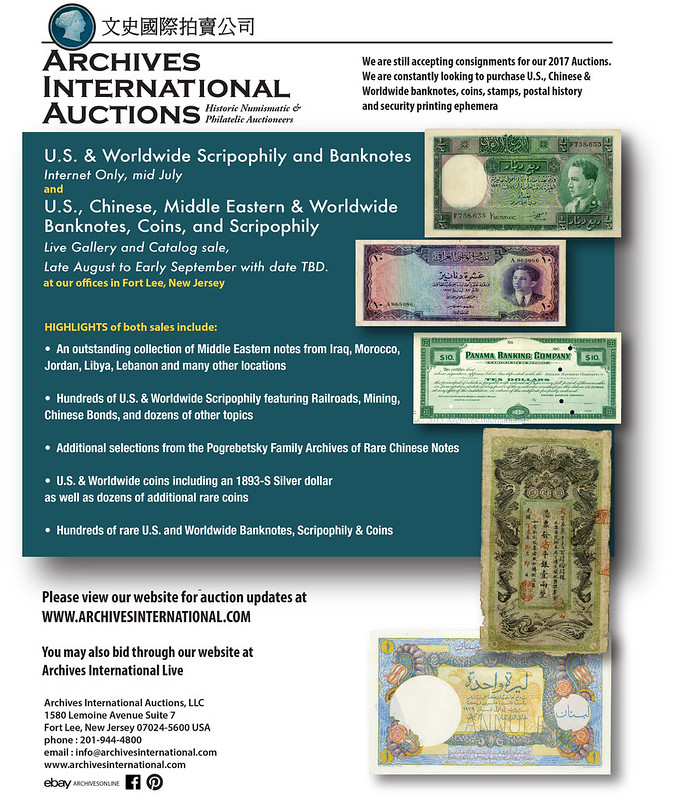
VOCABULARY TERM: TABLE MEDAL
Table Medal.
A medal not intended to be worn, as is a decoration, pin or badge, and therefore "lie on the table." Table medals, obviously, do not have loops for suspension or any device for attaching to a garment. By extension a table medal could be any medal, awarded or not, that has no suspension and cannot be worn (this could include many kinds of medals - historical, commemorative, commercial, even art medals - so table medal is not a precise term). The term is widely used in the field of orders, decorations and military medals. Collectors of these medals called non wearable medals by this term.
CLASS 12.6
Last week we revealed the meaning of the word CLASS and a number at the end of every term as the outline of all terms in An Encyclopedia of Coin and Medal Technology. There are 14 such classes. This week we list the sub-classes for the first half of these classes. Next week we will list those of the second half.
01 -- Physical Forms
02 -- Design
02.1 Design, Drawing, Sketches
02.2 Allegory &amo; Symbolism
02.3 Background, Field, Texture
02.4 Base Lines, Center Point &amo; Exergue
02.5 Borders, Dentiles &amo; Rims
02.6 Devices, Emblems &amo; Foreground
02.7 Edges
02.8 Elements, Ornaments &amo; Wreaths
02.9 Human Figures &amo; Portraits
02.10 Lettering, Dates &amo; Reserves
02.11 Openwork
02.12 Perspective
02.13 Shapes &amo; Silhouettes
02.14 Obverse/Reverse Relationship
02.15 Design Errora
03 -- Sculpture, Modeling, Signatures, Editing
03.2 Sculpture, Relief, Style
03.4 Modeling &amo; Plaster Casting
03.6 Signatures &amo; Mintmarks
03.8 Editing
03.9 Modeling &amo; Editing Errors
04 -- Engraving, Diemaking, Proving
04.1 Engraving, Hand Engraving
04.2 Computer Engraving
04.3 Pantographic Reduction, Machine Engraving
04.4 Dies
04.5 Punches, Puncheons
04.6 Diesinking, Hubbing
04.7 Proving
04.8 Proof Dies, Proof Finish
04.9 Die Anomalies, Errors
05 -- Composition, Media
05.1 Composition
05.2 Fineness, Tolerance &amo; Seigniorage
05.4 Metal Elements &amo; Alloys
05.5 Impressed, Relic &amo; Multiple Metals
05.6 Clad, Bonded &amo; Other Metals
05.7 Bimetal, Ring Technology
05.8 Nonmetallic Media
05.9 Metal Anomalies
06 -- Blanking, Upsetting, Striking, Coining
06.1 Milling &amo; Rolling
06.2 Blanking
06.3 Upsetting &amo; Whitening
06.4 Setup &amo; First Strikes
06.5 Striking, Presses, Presswork
06.6 Collars
06.7 Coining
06.8 Scales &amo; Weighing
06.9 Blanking &amo; Striking Errors
07 -- Casting, Electroforming, Repoussé , Etching
07.2 Casting
07.4 Electroforming
07.6 Repoussé
07.8 Etching, Niello &amo; Other Methods
07.9 Casting Anomalies
GEORGE HARINGX (1873-1957)
 George Haringx was a carpenter, sash &amo; door manufacturer, dance teacher, and a coin and stamp dealer in Rochester, New York. Rochester has been a hub for coin and stamp dealing since the time Haringx was born in 1870's; resulting some forty years later in the establishment of the Rochester Numismatic Association (R.N.A.), founded in 1912. Haringx joined the R.N.A. in 1917 since he was already a stamp and coin collector and dealer since at least 1914. There he was contemporary with George Bauer, Dr. George French, and the Canadian immigrant Joseph Hooper, to mention just a few whose biographies appear on this website. He knew Henry Chapman, Wayte Raymond and other numismatic notables who frequented meetings and events of the R.N.A.
George Haringx was a carpenter, sash &amo; door manufacturer, dance teacher, and a coin and stamp dealer in Rochester, New York. Rochester has been a hub for coin and stamp dealing since the time Haringx was born in 1870's; resulting some forty years later in the establishment of the Rochester Numismatic Association (R.N.A.), founded in 1912. Haringx joined the R.N.A. in 1917 since he was already a stamp and coin collector and dealer since at least 1914. There he was contemporary with George Bauer, Dr. George French, and the Canadian immigrant Joseph Hooper, to mention just a few whose biographies appear on this website. He knew Henry Chapman, Wayte Raymond and other numismatic notables who frequented meetings and events of the R.N.A.
George Haringx (1873-1957), was born in Rochester, New York in 1873, son of Christian Francis Haringx (1835-1898), and Julia Schlitzer Haringx (1849-1921). His father was born in Holland and came to America settling with his family in New York in 1848.
In January 1900 he opened Haringx Dance School with his studio in the Powers' Mirror Hall, Powers Building, Rochester, New York. He was known as Professor Haringx.
He married Martha Louise Large (1872-1945), and they had four children.
 He began as a stamp dealer in 1914 publishing advertisements in Mekeel's Weekly Stamp News. Shortly afterwards he added coins to his business inventory.
He began as a stamp dealer in 1914 publishing advertisements in Mekeel's Weekly Stamp News. Shortly afterwards he added coins to his business inventory.
In 1917 he joined the Rochester Numismatic Association (R.N.A.)
His advertisement in the Democrat and Chronicle, Sunday, October 26, 1941, page 51 lists him as the owner of Haringx Stamp Shop, 501 Cox Building, Rochester, New York, where he sold stamps and coins.
His wife died on October 9, 1945 and was buried in the Holy Sepulchre Cemetery.
His advertisement in the American Philatelist Vol. 60, 1946, page 246, lists him as the owner of The Stamp Shoppe, 36 St. Paul Street, Rochester, New York.
He died at the age of 85, on New Year's Eve, December 31, 1957, in New York.
To read the complete article, see:
HARINGX, GEORGE
(https://sites.google.com/a/numismaticmall.com/www/numismaticmall-com/haringx-george)
ARTICLE HIGHLIGHTS KRAUSE FOUNDATION EFFORTS
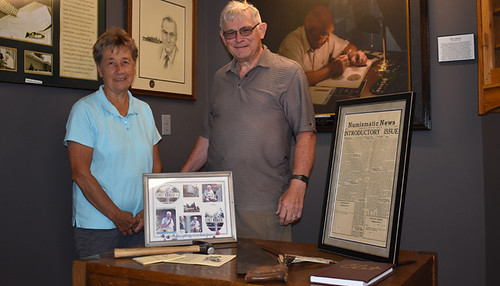
Pat Klug and Clifford Mischler
Just more than one year after he passed away, the generosity of Chet Krause lives on and will continue to do so for some time.
Founded in 1987, the Krause Foundation can afford to give roughly $100,000 a year to numerous groups in and around Iola with the goal of improving the quality of life for everyone.
The foundation has recently supported local daycares, provided funds for training for the fire department, helped repair a school sign, donated to a school locker room project, donated to upgrade the baseball field, given to the American Legion, as well as provide $9,000 annually in scholarships.
“We think we are doing things the way he would want them to be done and support things in the way he would want them to be supported,” said Pat Klug, Krause’s niece and board member of the Krause Foundation.
The foundation board consists of Klug, Bruce Meagher, Mark Sether, Dale Bestul and Heather Hoyord.
The group had roughly five years in which Krause was heavily involved before he turned the operations and decisions over to the members.
It was his upbringing as one of six children and then as a World War II veteran that formed the man many remember. After the war, he went home and took care of his father, who was ill at the time, and later he took care of his aunts, Klug said.
“He had a family responsibility and it extended then, it became part of his personality to take care of things,” she said.
It just so happened that after his business success, Krause ended up taking care of an entire town.
“Almost any part in Iola, when you walk out the door, you will be able to view something he contributed to to make Iola a better place,” said Clifford Mishler, Krause’s long-time associate and best friend.
Krause was a self-made man and founded Krause Publications, which was based in Iola and became an empire for hobbyist magazines.
“We were in essence a small metropolitan daily newspaper and when I say we were small, we probably had presses running more than the Milwaukee Journal,” Mishler said.
“Chet was the kind who would give money for anything that was worthy, and he didn’t even necessarily want his name on anything. He just wanted to help them out,” said Dave Lindsay, a decade’s long friend.
Lindsay knew Krause since they were half-grown youth, back when they both attended elementary school in Manawa.
“The biggest bulk of the time, he never got any credit and he didn’t want any,” Lindsay said. “He was just a very generous man and a gentleman who liked humanity.”
Krause also kept a down-home attitude. His office during retirement served as a gathering place for people to shoot the breeze and catch up on happenings.
“I usually got there in time for the coffee and the donuts, and there was usually a crowd of Iola people sitting in there, and they just visited,” Lindsay said. “He was one of the boys.”
Even though he was “Just Plain Chet,” as a book about him was titled, his legacy will live on due to the Krause Foundation.
To read the complete article, see:
Foundation maintains one man’s generosity
(http://www.waupacanow.com/2017/07/18/krauses-legacy-endures/#_)
To read the an earlier E-Sylum article, see:
IOLA REMEMBERS CHET KRAUSE
(http://www.coinbooks.org/v20/esylum_v20n28a19.html)

MORE ON THE BANK OF CANADA MUSEUM
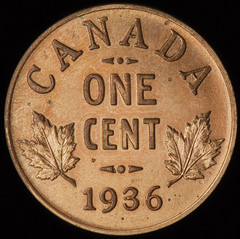 Despite having only a quarter of the artifacts compared to the former Currency Museum, the newly redesigned Bank of Canada Museum offers a complete story about Canada’s economy and everyone’s role within it.
Despite having only a quarter of the artifacts compared to the former Currency Museum, the newly redesigned Bank of Canada Museum offers a complete story about Canada’s economy and everyone’s role within it.
Its interactive approach blends 1,400 carefully selected artifacts alongside interactive exhibits, games and other displays to teach visitors about the economy’s “immensity and intricacy.” Along the way, visitors learn about their role in the system and are given an opportunity to “grasp the multi-faceted role played by the Bank of Canada.”
Berry said among his favourite new pieces on display is a 1914 Keirstead and Mersereau Fox and Fur Company of Canada share certificate, which he purchased for the National Currency Collection in 2015.
“Prior to purchasing it, I had not heard about the North American craze for fox furs during the early 20th century. Canada was a world leader in the black and silver fox husbandry industry,” he said, adding shares were worth $10 each. Fox breeding farms were located in Prince Edward Island and New Brunswick, and breeding pairs, which could cost upwards of several thousand dollars, were sent from Canada to other countries around the world.
Another subject left unexplored by the former Currency Museum was payment cards, of which Canadians are among the world’s most frequent users, Barry said.
“They are not money per se, but they are heavily used by Canadians to procure goods and services,” he added. “Like cash or cheques, they are a link between the individual and the economy. Given their importance in daily transactions and given the ever-increasing reliance of Canadians upon electronic means of payment, it is appropriate that payment cards be displayed.” Berry said there are also many “unique and historic items” on display at the new museum that would “make a numismatist salivate,” such as a 1911 silver dollar; French regime card money; a Prince Edward Island holey dollar; and a 1936 10-cent “dot” coin.
“To that, we have added hundreds of items never before put on display including such Canadian classics as the 1862 B.C. $20 gold pattern, an 1858 double specimen set of Canadian coins in their original case, and the ‘holy grail’ of Canadian coins, a specimen 1936 dot cent,” he said, adding the latter example was “eagerly sought after” by collectors who came of age in the 1950s and ’60s, “but never found.”
“Thanks to a recent donation we can now display not only the dot cent but the entire 1936 specimen set – the only surviving example – including all three denominations of dot coinage.”
To read the complete article, see:
New artifacts at Bank of Canada Museum offer complete story
(http://canadiancoinnews.com/new-artifacts-museum-offer-complete-story/)
To read the earlier E-Sylum articles, see:
BANK OF CANADA MUSEUM REOPENS
(http://www.coinbooks.org/v20/esylum_v20n28a22.html)
BANK OF CANADA'S MONEY MUSEUM
(http://www.coinbooks.org/v20/esylum_v20n26a20.html)
BRITANNIA COPYRIGHT NIXES FALKLANDS COIN
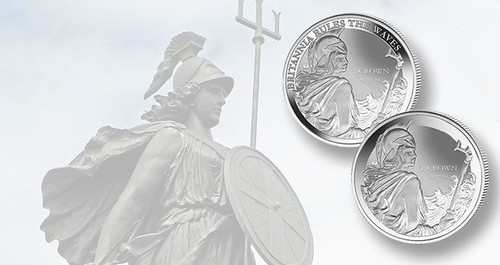
The Pobjoy Mint on July 18 announced that a trademark infringement necessitated the firm to remove the word BRITANNIA from the Reverse Proof 2017 .999 fine silver 1-ounce bullion coins minted for the Falkland Islands.
The change during production means that a total of 7,329 coins have been issued with the inscription, creating a relatively low-mintage version of the coin.
“We will be restarting production of these coins without the inscription for the remaining 42,671 of the issue limit,” according to a statement from the Pobjoy Mint.
Pobjoy Mint “was not aware” that Britannia is trademarked on coin, according to the firm. It was later confirmed that the trademark resides with the Royal Mint, based on a search with the United Kingdom’s Intellectual Property Office, but a representative of the Royal Mint had not responded to an inquiry at press time July 18.
The image of Britannia will be retained on the reverse, but the inscription BRITANNIA RULES THE WAVES will simply be removed and no legend will replace it.
The coin in its initial version went on sale June 13.
Within hours of the announcement about the inscription change, online auction sellers reacted, acknowledging the design type change and adjusting prices upward or halting sales of the coins temporarily.
To read the complete article, see:
Falklands' commemorative coin will have to remove “Britannia rules the waves”
(http://en.mercopress.com/2017/07/20/falklands-commemorative-coin-will-have-to-remove-britannia-rules-the-waves)
1977 GASPARRO LIBERTY DOLLAR REPRODUCTIONS
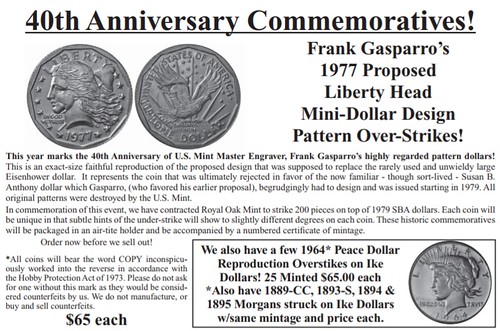

1942 EXPERIMENTAL GLASS, PLASTIC, ZINC CENTS
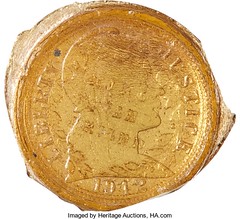
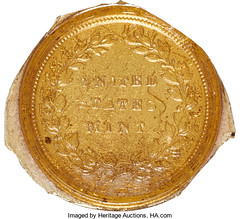
A group of experimental amber glass cents and experimental plastic and zinc cents from a 1942 effort to replace the U.S. copper cents will cross the block Aug. 4 in Heritage Auctions’ American Numismatic Association (ANA) Convention event. 28 items will be offered, including one of two uncirculated finished products known to exist.
“Following the success of Heritage’s $70,000 sale of a rare glass cent in January of this year, we were delighted to be presented with several high-grade examples inherited from the manager who worked on this unusual experiment,” said Mark Borckardt, Senior Cataloger and Numismatist at Heritage Auctions.
The collection comes from the Theodore Glynn family, whose father was a manager for Tennessee’s Blue Ridge Glass Corporation. Items from the Glynn Collection include a (1942) 1C Amber Glass Token, RB 42-70-T-1, R.8, MS64, NGC, a beautiful, 1C Cyan-Aqua Glass Preform (Blank), RB 42-70-T-3, R.8, MS66, NGC, and a 1942 1C Experimental Amber Glass Cent, RB 42-70-X-4, R.7, MS64, NGC, which exhibits complete impressions of the obverse and reverse dies with the details in rounded relief. Additional pieces exhibit the company’s efforts to create the glass cent.
“These trial impressions were crucial to the development of the finished product,” Borckardt said.
Depicting design elements, legends, and date all clearly visible – an Experimental Amber Glass Cent, RB 42-70-X-4, R.7, MS64 NGC – is a high-grade complete trial impression in yellow-amber glass. An interesting array of bubbles and a noticeable group of linear cracks at the upper obverse and others at the lower reverse are indicative of the glass composition prototypes. The entire Glynn Collection may be viewed here.
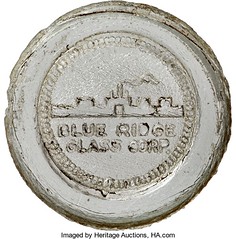
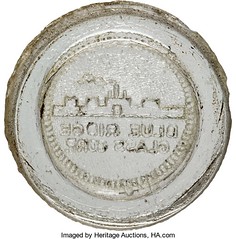
Outside of The Glynn Collection, Heritage is offering another selection of trial cents includes a 1942 1C Experimental Amber Glass Cent, Judd-2069, RB 42-70, R.7 -- Broken -- PCGS Genuine. Unc Details. Impact Strength Test. This important piece illustrates the finished product, the 1942 experimental cent as it would look if the glass cents had been chosen to replace the bronze composition during World War II. A previously unknown and unique reverse-image trial cent in plastic has never previously been offered. Two zinc-coated steel cents bearing the experimental design were struck inside the Philadelphia Mint in 1942. Also offered is an extremely unusual impregnated paper cent, one of only four known, made by the Colt Firearm Company.
The entire selection of experimental cents will be offered during Heritage Auctions’ American Numismatic Association (ANA) Convention event Aug. 4 in Denver.
For more information, see:
1942 1C Experimental Amber Glass Cent, RB 42-70-X-4, R.7, MS64 NGC. ...
(https://coins.ha.com/itm/patterns/1942-1c-experimental-amber-glass-cent-rb-42-70-x-4-r7-ms64-ngc/a/1258-5380.s)
QUERY: A POSSIBLE U.S. PATTERN COIN?
I was doing a quick preliminary sort of a very large mixed lot of tokens and world coins when I spotted an unusual bronze piece and put it aside thinking that it was a modern world coin that I hadn’t seen before. After a couple more days of sorting I started cataloging what I had pulled out and eventually ran into this piece again. Immediately it was apparent that it was not a world coin but it did start the wheels turning as it looked familiar to me. I recognized the arms of Pennsylvania on the reverse but since I am not a mainstream U.S. coin dude the nonsensical legends on the obverse made me grab my copy of ‘Magicians Tokens And Related Items” by F. William Kuethe Jr. which lists a number of tokens with gibberish legends. After having no luck with that catalog, I headed to my “go to” online favorites, the Heritage Auctions archives and the Newman Numismatic Portal.
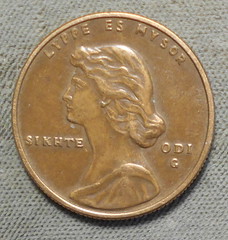
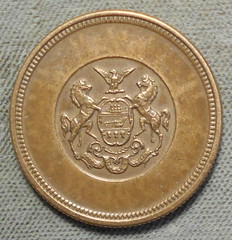
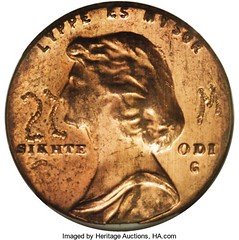

General Motors Roller Press Cent pattern
As soon as my search of the top legend (Lippe Es Mysor) came up, the “duh” alarm went off in my head as I recognized the obverse as that of the GM roller die pattern cent (Pollock-4060) with which I am somewhat familiar. That search solved my initial identification problem but as I reviewed the materials that I found it also added more questions than answers. Since I was headed out to the June Long Beach Expo the next day, I decided to take the piece along and get some experienced opinions from people I trust.
I first showed the piece to John Dannreuther (JD as he is known to all), a casual friend who has always been very helpful when I’ve had other questions about U.S. coins, patterns and related items. JD studied the piece then noted the size (26mm, 7.4 grams) which is much larger than the GM roller die cent patterns (19.1mm) and the completely different reverse. He also noted the lack of scratched in letters and numerals, roller die position notations, which occur on most if not all of the cent sized GM patterns. JD said he had never seen the piece before and asked if he could send images to Saul Teichman at uspatterns.com. Saul’s reply indicated that he had never seen the piece either. JD suggested that I show it to Fred Weinberg who has also been good about sharing his knowledge with me in the past.
Fred also took some time studying the piece, noted the same differences, then gave me a very technical but clear review of the piece concentrating on the edge reeding - what he refers to as “the reeding within the reeding” – and the shape and details of the dentiles (denticles). He said that neither detail would preclude the piece from being a U.S. Mint strike. He also had never seen the piece before. Fred’s tablemate (sorry, but I didn’t catch his name) then looked at the piece and found something that everyone had overlooked up to then – it appears to be struck on a clad planchet.
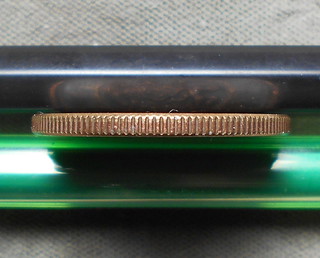
The reverse is where I could finally add something to the discussion as I had recognized the Pennsylvania coat of arms from the start. That center portion is used on the reverse of Julian CM-42, the Pennsylvania Bicentennial commemorative featuring William Penn (“Medals Of The U.S. Mint, The First Century 1792 – 1892” by R.W. Julian). The CM-42 medal includes the reverse legend “Distributed By Employees Of U.S. Mint During The Celebration Of Pennsylvania’s Bicentennial Oct. 24 1882” in an outer ring around the arms in the center.
The medals were actually struck on a steam press on a wagon pulled by six horses in the bicentennial parade with the medals then thrown to the crowd. Medals honoring President Grant (Julian CM-18) were struck and distributed in a similar manner three years earlier in 1879 during another parade.
Because of the similarity in design, size and time period, I have always thought that the Julian CM-42 and Julian CM-18 reverses were made from a two-part die although I don’t recall seeing that mentioned anywhere in the literature. This piece may confirm my observation as the Pennsylvania Bicentennial CM-48 in the modern yellow bronze composition was still available for purchase from the U.S. Mint at least up to 1969 (Mint List No. 613). That means that the CM-48 dies (more likely their younger brothers) were still available for other uses (such as this piece) during the 1960s.
CM-18 and CM-42 are both 25mm in diameter as are the 20th Century strikes (Julian is in error on CM-18) but my piece is 26mm. The coat of arms is 15mm in diameter on all the pieces so apparently that available die part was used on a new reverse die to strike this 26mm piece, omitting the outer wording band.
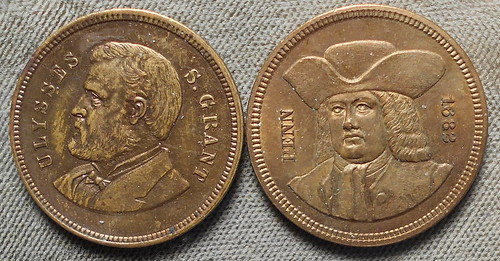
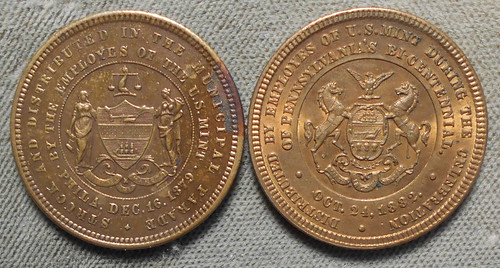
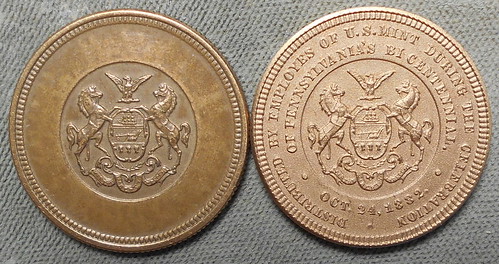
That is where things stand right now with many questions still unanswered. Is it a U.S. Mint product as the evidence so far tends to indicate? Is it a pattern and if so, for what - clad coinage, a small dollar coin, a world coin, a pressure or other test piece? How does it fit with the GM roller die cent or are they not related beyond sharing an obverse motif? Is the medal center piece on the reverse meaningful or just an on-hand die to use for balance opposite the obverse die for trial strikes? Is it a “pattern of a pattern” as someone suggested only half in jest?
One thing that JD, Fred and I agreed on is that sharing the piece with the E-Sylum readers presents the best chance of gaining further information. I will have it at my ANA table in Denver for the first two days of the show.

HOAGY CARMICHAEL'S KENNEDY ASSASSINATION HALF
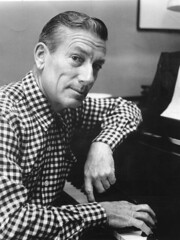 Carmichael frequented the desert through the 1940s with the rest of the affluent Hollywood crowd and looked at purchasing land. By the time he did actually purchase, prices had gone up ten times. He settled on a stunning midcentury home designed by William Cody, located on the 8th green of the prestigious golf club with gorgeous views.
Carmichael frequented the desert through the 1940s with the rest of the affluent Hollywood crowd and looked at purchasing land. By the time he did actually purchase, prices had gone up ten times. He settled on a stunning midcentury home designed by William Cody, located on the 8th green of the prestigious golf club with gorgeous views.
He was a regular on the links, along with his movie star friends. He continued to write individual songs, collaborating with many different lyricists, most notably Johnny Mercer who lived down the way in Palm Springs. Carmichael was comfortably earning some three-hundred thousand dollars a year in royalties.
He was an avid coin collector, having guests at his Thunderbird house sift through piles of coins on the floor after dinner looking for buffalo nickels. Carmichael prized a coin given to him by Jacqueline Kennedy that the President had in his pocket when he was shot in Dallas.
To read the complete article, see:
Hoagy Carmichael: A music man's days in the desert
(http://www.desertsun.com/story/life/2017/07/21/hoagy-carmichael-music-mans-days-desert/501133001/)
Joel writes:
This is a new one on me. Of course, even if the story is true, it would be virtually impossible to verify that Jackie Kennedy gave him a specific coin that was in the President's pocket the day he was assassinated.
Len writes:
Jackie Kennedy made a number of similar gifts at the same time (not coins, but other personal items), and I am fairly certain some letters of transmittal exist. This one is new to me, though.
It is reminiscent of the half dollars placed over Lincoln’s eyes at the time of his death (which, if memory serves, are in the Chicago Historical Society).
Joel writes:
The coins were on exhibit the last time I visited the Chicago Historical Society, which was about three years ago.
I also recall reading that Lincoln had a Confederate bill in his pocket the evening he went to Ford's theater.
Joe writes:
It is mentioned in a New York Times article in 1982. It attributes the story to Carmichael’s son.
Also, a 1985 New York Times article, quite lengthy, discusses the Superior auction, but has no mention of the Kennedy coin. Surely, if it were included in that auction, it would have been highlighted.
My opinion: I find this story very much out of character for Jackie Kennedy. It seems unlikely that she would have given an intimate item from the assassination to someone outside the family. I had never heard of this story, and nothing on it surfaces on the JFK Library website. Also, JFK was notorious for never carrying any money with him. But I cannot disprove the claim.
As an aside, Carmichael was born on November 22 (1899), the date, of course, of the Kennedy assassination.
Both articles are interesting - see the links below. The one on the Superior sale is a long Ed Reiter column covering multiple topics, much like The E-Sylum today. -Editor
To read the earlier E-Sylum articles:
THE COINS FROM LINCOLN'S EYES
(http://www.coinbooks.org/esylum_v08n47a25.html)
THE COINS PLACED ON LINCOLN'S EYES
(http://www.coinbooks.org/v20/esylum_v20n11a09.html)
To read the New York Times articles, see:
A SON RECOLLECTS HOAGY CARMICHAEL
(http://www.nytimes.com/1982/01/03/nyregion/a-son-recollects-hoagy-carmichael.html)
COINS; HOAGY CARMICHAEL'S COLLECTION
(http://www.nytimes.com/1985/12/08/arts/coins-hoagy-carmichael-s-collection.html?pagewanted=all)
KENNEDY COMMEMORATIVE COIN ACT LEGISLATION
 Senators Edward J. Markey (D-Mass.) and John McCain (R-Ariz.), and Reps. Kevin McCarthy (CA-23) and Joseph P. Kennedy III (MA-04) today introduced legislation calling on the Secretary of the Treasury to issue a President John F. Kennedy commemorative coin. The lawmakers, members of the John F. Kennedy Centennial Commission, introduced the legislation as part of this year’s President Kennedy Centennial celebration. The silver $1.00 coin would honor President Kennedy’s legacy of courage, service, innovation, and will be a reminder to future generations of the importance of service to one’s country. Partial proceeds from the sale of the coins will be devoted to the John F. Kennedy Library Foundation to support the John F. Kennedy Presidential Library and Museum.
Senators Edward J. Markey (D-Mass.) and John McCain (R-Ariz.), and Reps. Kevin McCarthy (CA-23) and Joseph P. Kennedy III (MA-04) today introduced legislation calling on the Secretary of the Treasury to issue a President John F. Kennedy commemorative coin. The lawmakers, members of the John F. Kennedy Centennial Commission, introduced the legislation as part of this year’s President Kennedy Centennial celebration. The silver $1.00 coin would honor President Kennedy’s legacy of courage, service, innovation, and will be a reminder to future generations of the importance of service to one’s country. Partial proceeds from the sale of the coins will be devoted to the John F. Kennedy Library Foundation to support the John F. Kennedy Presidential Library and Museum.
“I was inspired to enter public service because of President Kennedy, and now, more than ever, I hear and heed his message of aspiration and inspiration with a heart and mind renewed,” said Senator Markey. “I am honored to serve on the John F. Kennedy Centennial Commission and to introduce this bipartisan legislation with my colleagues to honor President Kennedy’s legacy of public service with this commemorative coin.”
“President John F. Kennedy’s commitment to public service and iconic leadership have left an indelible mark on our nation that continues to inspire future generations of Americans,” said Senator McCain. “I’m proud to join my colleagues in introducing this legislation to honor President Kennedy’s legacy of service on the centennial of his birth.”
“I am honored to be introducing this legislation with my colleagues to mint a silver dollar coin in honor of President John F. Kennedy,” said House Majority Leader McCarthy. “Whether it was asking what we can do for our country or challenging NASA and our nation to reach the moon, President Kennedy’s legacy is etched in history, and this coin appropriately recognizes his many accomplishments and service to our country.”
To read the complete article, see:
News Release
Senator Markey and McCain, Reps. McCarthy and Kennedy Introduce President John F. Kennedy Commemorative Coin Act Legislation
(https://www.jfklibrary.org/About-Us/News-and-Press/Press-Releases/2017-John-F-Kennedy-Commemorative-Coin-Act-Legislation.aspx)
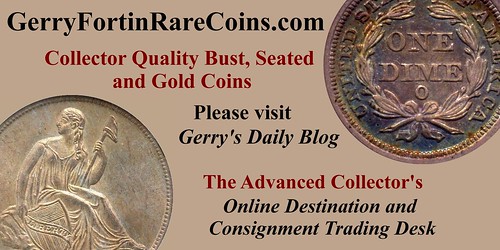
NUMISMATIC NUGGETS: JULY 23, 2017
Jahangir Silver Zodiacal Rupee
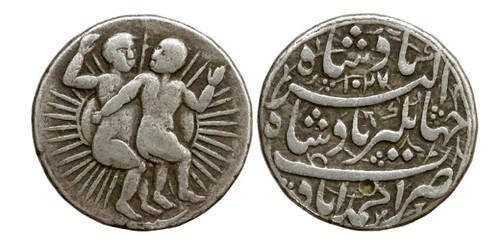
Jahangir (1605-1628 AD), Silver Zodiacal Rupee, Ahmedabad, 11.3 g, 20.27 mm, AH 1027. Obv: Sign of Gemini (Twins), Farsi inscription Sanah 13 below. Rev: Farsi inscription 'Jahangir Badshah Akbar Badshah Zarb Ahmadabad'. (KM # 150.7). Extremely Fine, Rare.
To read the complete lot description, see:
http://www.imperialauctions.com/view-lot.aspx?lid=6185&aid=8
1796 Woodbrodge Alms House Penny Token
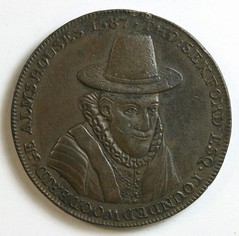
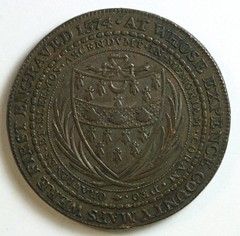
This Conder token was produced by printer and bookseller Robert Loder of Woodbridge (Suffolk, England). So what does the latin motto “ORATIONES . ET . ELEEMOS . ASCENDVMT . IN . MEMORIAM . CORAM . DEO.” mean? -Editor
To read the complete lot description, see:
Lot 62: 1796 Loder Thomas Sekford Wood Bridge Alms House Penny token GEF
(https://www.invaluable.com/auction-lot/-1-c-33B47EB809)
917 India One Rupee Banknote
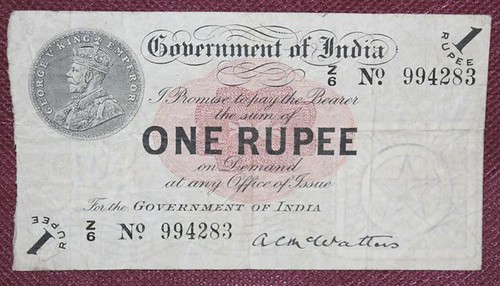
Particular banknote issued in India in 1917. Size in cm: 12.5 x 6.8.
To read the complete lot description, see:
India - 1 rupee 1917 - Pick 1b
(https://auction.catawiki.com/kavels/12727231-india-1-rupee-1917-pick-1b)
Parachute Troops Medal
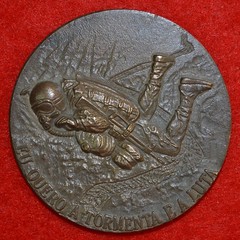

Bronze Medal allusive to the parachute troops Magnificent medal with 60 mm of diameter and with 98 grs
To read the complete lot description, see:
Bronze Medal allusive to the parachute troops
(http://www.ebay.com/itm/Bronze-Medal-allusive-to-the-parachute-troops/263100597143)
1900 Exposition Universelle Medal
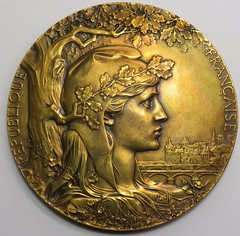
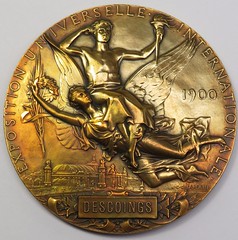
This bronze medal was given out as a prize at the 1900 World's Fair held in Paris, France. This is a well stored example with beautiful toning! They are nearly impossible to find in this condition.
To read the complete lot description, see:
1900 BRONZE Large Medal Worlds Fair Exposition Universelle J.C. Chaplain #13777
(http://www.ebay.com/itm/1900-BRONZE-Large-Medal-Worlds-Fair-Exposition-Universelle-J-C-Chaplain-13777/322607751019)
A NEW UNITED SOUTH TOKEN DIE VARIETY
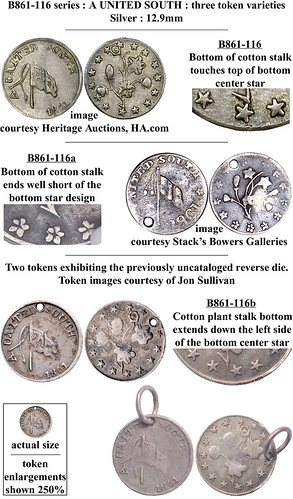 It's always great fun to discover something new, but to find two at the same time is exciting! A previously uncataloged reverse die has now brought to three the known varieties of the rare A UNITED SOUTH token. At just 12.9mm, they are slightly smaller than the 14mm US silver three-cent pieces.The obverse is silver with A UNITED SOUTH at top, 1861 below, and a Confederate flag in the center. The reverse has 15 stars around a cotton plant with stalk, leaves and bolls in center. With a mere dozen or so specimens known, the discovery of a new die variety is quite significant.
It's always great fun to discover something new, but to find two at the same time is exciting! A previously uncataloged reverse die has now brought to three the known varieties of the rare A UNITED SOUTH token. At just 12.9mm, they are slightly smaller than the 14mm US silver three-cent pieces.The obverse is silver with A UNITED SOUTH at top, 1861 below, and a Confederate flag in the center. The reverse has 15 stars around a cotton plant with stalk, leaves and bolls in center. With a mere dozen or so specimens known, the discovery of a new die variety is quite significant.
The two examples were brought to my attention by Mr. Jon Sullivan (www.sullivannumismatics.com) in an email about them. Jon also noted that the two specimens (shown here) had very faint reeded edges as opposed to the plain edges usually reported.
Over the years I've noted perhaps four or five of the B861-116, only one of the 116a, and now two of the 116b. Under the heading of "treasures are still out there", the ringed token shown was found by a metal detectorist near Stones River Battlefield in Tennessee!
A detailed history of the token may be found in Confederate Numismatica - Part 1 pg 37-38, available at www.ConfederateNumismatica.com .
A LIST OF COIN BLOG WEB SITES
While we prioritize sites in English, other languages are welcome if the sites contain good information. Here's a listing of coin blog sites. Let me know what you think of these, and if there are any major sites you think are missing and ought to be included. Thanks. -Editor
A Gift for Polydektes
Ancient Coin Collecting
Ancient Coins
Coin Collectors Blog
Coin World Blogs
CoinThrill.com
Gerry's Daily Blog
Littleton Coin Blog
Mint News Blog
Numismatics With Kenny Blog
World Coin News Blog
Banknote News
Chinese Money Matters
Donald Scarinci
Making the Grade
Stack's Bowers Blogs
The Hawaiiana Numismatist
To visit the Newman Numismatic Portal, see:
https://nnp.wustl.edu/
RESEARCHERS COMPILE COIN DIGIT IMAGE DATABASES
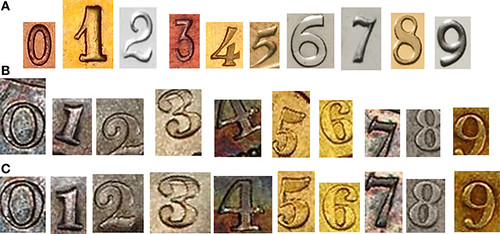
Xingyu Pan and Laure Tougne have published a paper describing their database of digits extracted from scans of modern coins.
The database of 3000+ images itself cannot be directly downloaded. They explain here that you may request it from them.
The paper is good! The databases discussed are
- 606 digit images manually cropped from high-resolution photographs of well-conserved coins
- 1,200 digit images automatically extracted from a subset of a PCGS database containing coins in different states of preservation
- 1,200 digit images manually extracted from the same coin photographs as above
Although the new dataset only contains digits from modern coins the authors discuss the literature of recognition of ancient coin lettering. There are as yet no public databases of images of the digit or letters extracted from images of ancient coins.
To read the complete article, see:
Database of Digits Extracted from (modern) Coins
(http://digitalhn.blogspot.com/2017/07/database-of-digits-extracted-from.html)
Since the release date struck on a coin is important information of its monetary type, recognition of extracted digits may assist in identification of monetary types. However, digit images extracted from coins are challenging for conventional optical character recognition methods because the foreground of such digits has very often the same color as their background. In addition, other noises, including the wear of coin metal, make it more difficult to obtain a correct segmentation of the character shape. To address those challenges, this article presents the CoinNUMS database for automatic digit recognition.
Nowadays, character recognition methods have been widely implemented into various applications in our daily life like license plate recognition system, mail sorting machine, and Google Instant Camera Translation. For each category of application, appropriate databases are essential requirements to develop adapted algorithms. Even a large amount of applications are developed on a small set of private data collected by researchers, public databases play more and more important roles for developing generalized methods and launching competitions of different approaches.

characters having the same color in foreground as in background, like characters on coins, draw our attention. As a matter of fact, such characters are seldom studied in character recognition issues but they are largely presented in sculptures, industrial products, coins, artworks, etc. Let us call “hollow-type font” such characters have the same color or texture in foreground as in background. Up to now, there is no specific database of characters in hollow-type font.
As image-based coin recognition has become an active research topic for recent decade, various algorithms based on training global features (Fukumi et al., 1992; Huber et al., 2005; Van Der Maaten and Poon, 2006; Reisert et al., 2007) or matching local features (Kampel and Zaharieva, 2008; Arandjelovic, 2010; Pan et al., 2014) have been proposed.
At the beginning, studies were limited in classification of modern coins where legends were treated no differently as other patterns in relief. In our opinion, there are two reasons why researchers were not interested in reading coin legends. First, detection and recognition of coin characters in hollow-type font is a real challenge to obtain good results because of their hard-to-segment foreground, not to mention their extremely high variations in terms of font, size, tilt, etc. and, the possible overlap with other decorative patterns (see Figure 2). Second, most legends may stay unchanged among different coin types of one country at the same period, for example, “LIBERTE EGALITE FRATERNITE” on different French franc coins. Thus, the differences in terms of overall appearance are easier to differentiate different coin classes than local legends.

First attempts to deal with characters in hollow-type font were made by researchers trying to classify ancient coins. To classify manual struck ancient coins, the overall appearance is sometimes confusing due to a high intra-class difference. For example, in some cases for ancient coins with an emperor portrait as the main pattern, the different portraits can be the same emperor and the similar portraits can be different emperors. Therefore, reading legends indicating the emperor’s name can assist a lot to classify those ancient coins. To solve such challenges within characters extracted from ancient coins, researchers have opted for solutions rooted in object recognition rather than character recognition methods.
Recently, several databases of coin photographs have been built mainly for image-based coin recognition issues. Establishing such a database with a decent data scale is much more difficult than building one for face recognition, for example, due to availability of rare coins and highly required photograph quality. Therefore, most online amateur photographs taken by coin dealers and collectors cannot be used as eligible data. It requires that museums, numismatic companies, and research institutions make effort to collect coins and take photographs under strictly controlled conditions. Meanwhile, how to shoot quality coin photographs through a structured and systematic approach is still an open field for professional photographers.
Interestingly, even among professional coin photographs, criteria of quality could differ in different application contexts. To display an esthetic and shiny coin appearance to coin dealers and collectors, one or more angled lighting could be applied; however, to analyze small details on coins, a quasi-uniform light condition is expected. In general, a quasi-uniform background, a minimal shadow, and constant controlled light conditions are main characteristics of numismatic databases used in computer vision-assisted applications.

Conclusion and Perspectives
A database consisting of digit characters having indistinct foreground and background has been described in this article. It is built from professional coin photographs provided by numismatic companies. We propose this database based on two motivations. First, those characters with “hard-to-segment” foreground in hollow-type font have been less studied in previous work of character recognition. Second, due to lack of effective algorithms to deal with characters in hollow-type font, legends on coins are difficult to read precisely by computer vision, which make numismatic community still relies on expensive human investigation.
Due to the availability of professional coin photographs, the current version of our database has not a huge amount of data and equal data distribution. Our future work is to continue our effort to further enlarge the database with help of numismatic companies: with the availability of more professional coin photographs in better quality, in next versions CoinNUMS will be largely increased in scale; furthermore, we aim at extending CoinNUMS little by little to a more comprehensive database, perhaps renamed as CoinLEGENDS, that will include letters, foreign characters, and short words as well. We hope CoinNUMS will become an initiative to draw attentions of researchers studying on character recognition to some complex cases which rarely happens in general situations but could be common in a specific domain. For a numismatic perspective, we hope automatic reading legends on coins will become as fast and precise as nowadays matured OCR applications.
To read the complete paper, see:
A New Database of Digits Extracted from Coins with Hard-to-Segment Foreground for Optical Character Recognition Evaluation
(http://journal.frontiersin.org/article/10.3389/fict.2017.00009/full)
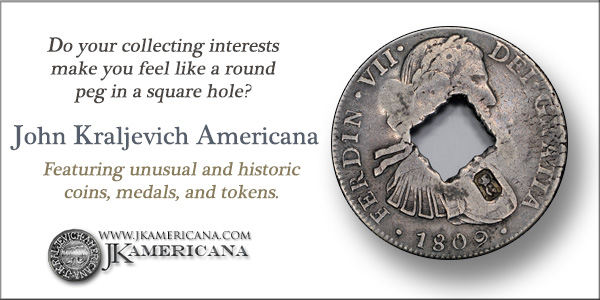
ANNANDALE COIN SHOW KIDS PROGRAM JULY 2017
On Saturday July 22, 2017 Tom Kays and I ran the Kids Club event at Wayne Herndon's Annandale Coin Show (Tom assisted greatly with this writeup as well). We had a nice large room across the lobby from the coin show entrance, which was held at the Ernst Cultural Center at the Northern Virginia Community College campus.
We always scramble a bit to get set up in an hour, but things worked out well this time. We arrived early and our speaker was already getting set up. Professor William (Bill) Wright is an adjunct history professor at Lord Fairfax Community College. Bill collects and spoke about Greek gods and heroes pictured on ancient coins. He brought along many beautiful ancient coins and had the fortitude to hand them out to the children on little trays with magnifying glasses to pass around the audience. He impressed upon the children that they must be good caretakers of these ancient artifacts so that people hundreds of years from now may be able to do just what these lucky kids did, to see and hold coins that have passed down to us from antiquity.
No corroded bronzes here, but nice, high-grade silver Athenian Owls, coins with Zeus and Alexander, quadriga and lightning bolts, and worth many hundreds of dollars, passed throughout the room in the hands of the children. We saw parents taking photos of their children holding the ancient coins in a rapture of concentration and high regard. None precipitated from their little trays and all returned to their owner without blemish. We may have been holding our breath just a little for that outcome.
Before Bill spoke we told him he might award a few extra Action Bucks to children for especially good answers or for earnest participation. Bill would ask what symbols, what characters, what meaning the kids saw on the coins before handing them out, having projected them on a big screen to explain them and their context. Little children, apparently watch and remember movies like the Percy Jackson series that feature Greek Mythological figures and their sagas, because some of the most amazing “two-dollar answers” poured forth from even the smallest kids to the amazement of the adults.
We had to run all over the room handing out about fifty extra auction bucks as the little scholars knew things way beyond what we knew in third grade. Looking at what I would call a “seahorse” one boy properly named it a “Hippocampus.” Others began a deep discussion about family relations among the gods and heroes. By the end, we heard the professor respond with “that is a sound conjecture” which could have been code words for needing to go look something up, or perhaps needing a beer. Toward the end of the lecture we had even awarded an auction buck to one of parents as many were so animated with the talk they forgot their place and were raising their hands too, trying to keep up with their little scholars, not always succeeding.
Tom and I set up the registration and auction lot tables. Albums and coin books were awarded as door prizes to encourage all to register. Those who do will receive a reminder card in the mail for the next event. All the dozens of lots for auction are donated by generous Nummis Nova members and some coin dealers on the bourse floor. Popular lots included silver dollars, proof and type coins, obsolete currency, tokens, medals, and even official Disney pins.
Lots must be worthy of the collections of these budding coin collectors who do know values and quickly questioned the authenticity of one mint medal, and do their homework on unfamiliar items, polling value estimates to obtain consensus from many of the coin collecting adults in the room. Tom helped find some chalk for the blackboard and ordered some additional chairs for the audience, which came in handy. People started trickling in right at 11:00 am but we soon had a full house.
Bill Wright did a fabulous job connecting with the kids and quizzing them in return for auction dollars. Here are some pictures Tom and I took. I didn't manage to get one of Tom (behind the scenes), who did a great job calling the auction while I acted as the runner. Sorry!
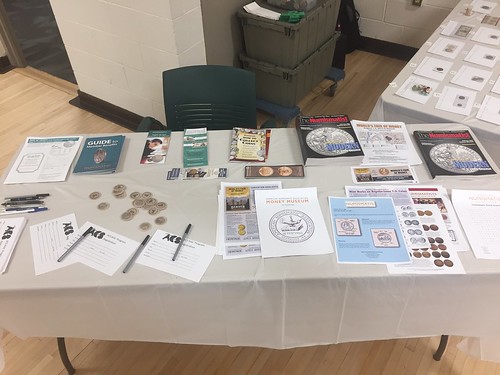
Registration table
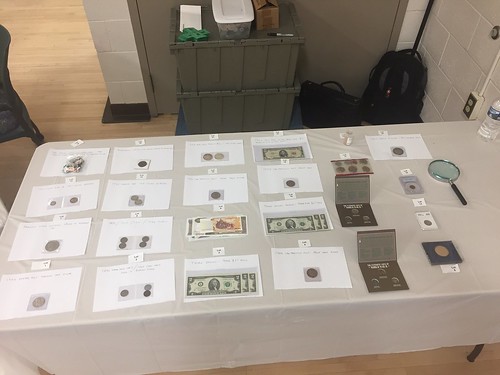
Auction lots
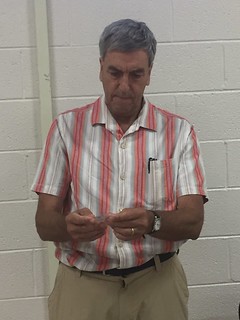

Speaker Bill Wright; Helper Wayne Homren

Enjoying the presentation

Buying coins from the Treasure Box
We had our usual mix of regulars and newbies. The crowd was engaged, and clearly enjoyed the presentation. Everyone participated in the auction, and a lot of kids came up afterwards to spend some of their remaining auction dollars on coins from our "Treasure Box."
We were done by about 12:30 and packed everything up for the next show. We do this again in December, and we have an odd feeling that we will see some of that flood of auction bucks given for participation will come back to us in due course, perhaps under a dynamite family pooling strategy where that new group of five siblings, who sat in back, observing the scene but not bidding, could dominate the room in December with a hundred auction bucks between them.
Another consortium of boy scouts up front also gave me the impression they will “be prepared” next time too. Other old hands (fifth grade) have been attending for a couple of years and no telling what wealth they have amassed, who will return as proto-teenagers with auction bucks to burn.
Worthy numismatic donations to further the education of these sharp children, who may soon be bidding, winning, and likely dominating future coin auctions using real dollars from their allowance (boo-yah!) may be accepted by any participating Nummis Nova member.
SLOW SUMMER FOR 1714 FLEET TREASURE SALVORS
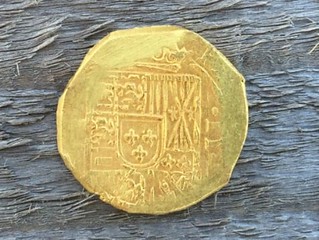 The seas have not been kind this summer to treasure hunters looking for gold off the coast of Wabasso.
The seas have not been kind this summer to treasure hunters looking for gold off the coast of Wabasso.
So far, the crew of the Capitana has recovered only one gold coin, an Escudo minted in Mexico about 1714. Diver Grant Gitschlag and diving partner Cole Smith made the discovery July 10 as part of the salvage operations underway for the 1715 Fleet-Queens Jewels LLC. Other items uncovered last month include silver coins, pottery and musket balls.
“It has been one of the worst summers weather-wise that we’ve ever experienced,” said Capitana Capt. Jonah Martinez, of Port St. Lucie.“But we’re getting through it day by day, and we’re working in an area where we found items before so we’re optimistic.”
On July 10, Gitschlag had a hit on the metal detector, dug some holes on the ocean floor and the gold coin just popped out, Martinez said. He thinks many more items will be found in the debris field known as Corrigan’s wreck, located between Wabasso and Indian River Shores.
The coins are part of the lost treasure from the 1715 Fleet shipwrecks. Twelve galleons laden with treasures from the New World were bound for Spain but 11 were lost during a hurricane off the coast of Florida on July 31, 1715. Most of the treasure still lies beneath the ocean.
The 1715 Fleet-Queens Jewels LLC, a historic shipwreck salvage operation, owns the rights to the remains of the 1715 Treasure Fleet.
Former owner Brent Brisben acquired the salvage rights from legendary treasure hunter Mel Fisher and has since sold the controlling interest in the salvage company. But he remains in touch with Martinez, checking in regularly to see how the treasure hunt is going.
To read the complete article, see:
Salvagers recover 1715 Fleet gold coin but say treasure hunting has been tough this summer
(http://www.tcpalm.com/story/news/local/indian-river-county/2017/07/20/salvagers-recover-1715-fleet-gold-coin-but-say-treasure-hunting-has-been-tough-summer/495070001/)
EXHIBIT: GEORGIA - AMERICA’S FIRST GOLD RUSH
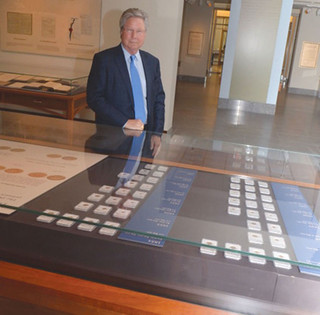 Buckhead resident Bob Harwell’s golden touch is on display as part of a new exhibition in the Hargrett Galleries of the Richard B. Russell Special Collections Library at the University of Georgia in Athens.
Buckhead resident Bob Harwell’s golden touch is on display as part of a new exhibition in the Hargrett Galleries of the Richard B. Russell Special Collections Library at the University of Georgia in Athens.
The exhibition, “Gold Digging in Georgia: America’s First Gold Rush,” highlights the history of north Georgia gold mining from the 1820s to the Civil War. It had its grand opening July 13 (with a soft opening June 5) and features photos, historical documents, artifacts and more.
A key part of the exhibition is a complete set of gold coins produced at the Dahlonega Mint prior to the Civil War. The set was accumulated by Harwell, president of Hancock &amo; Harwell Rare Coin and Precious Metal Co. in Buckhead.
The set on display in Athens was accumulated over a six-year period from across the United States for Atlanta collector John McMullan. McMullan donated his set of Dahlonega coins – called the Reed Creek Collection – to the university for its permanent collection. The set is valued at nearly $1 million. There are 62 coins in the collection on display.
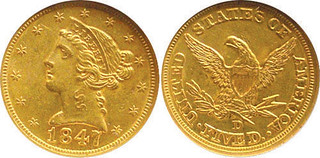 “Coins from the Dahlonega Mint are a unique and lasting relic of an important part of Georgia history,” Harwell said in a news release. “Dahlonega predates the California Gold Rush and spawned the first industrialization of North Georgia.”
“Coins from the Dahlonega Mint are a unique and lasting relic of an important part of Georgia history,” Harwell said in a news release. “Dahlonega predates the California Gold Rush and spawned the first industrialization of North Georgia.”
In addition to the set on display at UGA, there are sets on public display at the Dahlonega Gold Museum in Dahlonega and at the Federal Reserve Bank in Atlanta.
The exhibition at the Richard B. Russell Special Collections Library will run through Dec. 5.
To read the complete article, see:
Buckhead resident’s collected coins on display at library
(http://www.mdjonline.com/neighbor_newspapers/northside_sandy_springs/buckhead-resident-s-collected-coins-on-display-at-library/article_5e6be0be-6bce-11e7-8055-2329a4e01672.html)
CANADA'S DIEPPE COMMEMORATIVE CONTROVERSY
 A new silver coin honouring the anniversary of the Dieppe Raid will be released next year by the Royal Canadian Mint, an announcement coming two months after a previous coin drew the ire of veterans.
A new silver coin honouring the anniversary of the Dieppe Raid will be released next year by the Royal Canadian Mint, an announcement coming two months after a previous coin drew the ire of veterans.
The first coin to commemorate the 75th anniversary, released in May, labeled the raid as a “battle.” As a result, veterans urged the mint to take the coin back and correct it, no matter the cost.
The original coin was produced as part of the mint’s “Second World War Battlefront Series.”
On Aug. 19, 1942, Canada suffered heavy losses in the raid at Dieppe, France, which was carried out in an effort to breach enemy defences.
Members of the Dieppe Military Veterans’ Association, based in Dieppe, N.B., objected to the labelling of Dieppe as a “battle” instead of a “raid,” telling Global News it had never been known as a battle.
Now, two months later, even after the mint originally defended the coin, saying the word “battle” was appropriate, Moncton-Riverview-Dieppe MP Ginette Petitpas Taylor says a new silver coin will be released on a date in 2018 to be announced later.
A release by Petitpas Taylor, said she had reached out to the mint to support a request for a new commemorative coin.
To read the complete article, see:
New Dieppe Raid commemorative coin to be released next year after controversy
(http://globalnews.ca/news/3616327/new-dieppe-raid-commemorative-coin-to-be-released-next-year-after-controversy/)
But the mint defended its coin, saying the word “battle” was appropriate.
Military historian David O’Keefe doesn’t feel the same way.
“Battles take place over days, weeks, months, whereas a raid like Dieppe was, happens in a matter of hours,” he told Global News.
“In and out. And in this case, it was incredibly costly.”
The mint has said that changing the name of the coin would be impossible because thousands have already been sold.
But that’s of little concern for veterans who say that would just be the cost of being respectful and making sure it’s right.
To read the complete article, see:
Veterans see a big problem with this coin honouring the ‘Battle’ of Dieppe
(http://globalnews.ca/news/3508411/battle-of-dieppe-coin/)
YALE UNIVERSITY ELIZABETHAN CLUB MEDAL

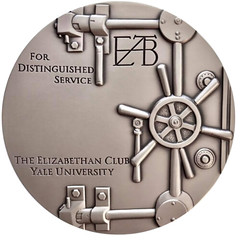
Medallic artist and CCAC member Heidi Wastweet has completed a new work for Yale University’s Elizabethan Club. The medal, to be given in recognition of extraordinary service to the club, is not available for purchase—which is unfortunate, because it is truly delightful.
Founded in 1911, the Elizabethan Club (affectionately called “the Lizzie”) is dedicated to “the appreciation of literature and the arts and of the social intercourse founded upon such appreciation.” Tea is an afternoon ritual, and over cups of the club’s own blend the conversation flows, often swirling around the collection of rare original manuscripts housed in the club’s vault. These include Shakespearean folios, one of the three known 1604 copies of Hamlet, and first editions of books such as Milton’s Paradise Lost and Spenser’s Faerie Queene. Since its founding more than a century ago, the club has become home to scores of such treasures, along with such items as a lock of Byron’s hair and a life portrait of Queen Elizabeth I.
Ms. Wastweet was among several medalists invited to submit designs for the medal, and she visited the club personally to do her research. On her website she writes that she was struck by “the combination of deep history and lighthearted sense of humor.” She also noted that, for its own publications, the club uses a clean and contemporary typeface and presentation. “I sought to portray that balance of reverence with jest,” she writes, “and old with new”:
My winning design is based on the club’s insignia, Queen Elizabeth’s Falcon badge… There are several versions of the falcon but I wanted to offer a completely original, creative interpretation rather than a copy of any existing one. The falcon is modeled after the white Gyrfalcon, favored by Royal English falconers. The third Tudor rose and scepter are replaced by a Lizzie tea cup as a cheeky reference to the daily tea tradition. The handwriting in the background is precisely traced directly from a letter in the club’s collection, hand signed by Queen Elizabeth in 1595…
The reverse side of the medal, featuring the massive vault door mechanism, is decorated with the Queen’s cypher with room for engraving each recipient’s name.
The recipient of the first medal was Stephen Parks, the club’s retired librarian and “dedicated defender of the vault.” Himself a collector, Mr. Parks was awarded his silver medal on June 24, 2017. On her Facebook page Ms. Wastweet wrote, “Such a pleasure for me to witness that ‘wow’ moment when he first sees his medal!”
Struck by the well-known Medallic Art Company, the silver medal is 3 inches in diameter and weighs 10 ounces. In addition to Mr. Parks’s medal, an additional 20 copies were struck and set aside for future recipients.
To read the complete article, see:
Artist Heidi Wastweet blends history with whimsy in Elizabethan Club medal
(http://news.coinupdate.com/50900-2/)
For more information on Heidi Wastweet's work, see:
http://www.wastweetstudio.com/
JANE AUSTEN BANKNOTE UNVEILED
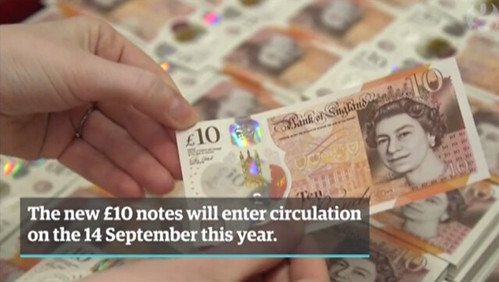
The new £10 note featuring Jane Austen has been unveiled on the 200th anniversary of the author’s death, complete with a quote about reading – said by one of her characters who has no interest in books.
Austen becomes the first female writer (following in the footsteps of William Shakespeare and Charles Dickens) to feature on a banknote.
The note, launched by the Bank of England at Austen’s resting place, Winchester Cathedral, includes an image of the writer and one of her most beloved characters, Elizabeth Bennet.
There are also illustrations of her writing table and her brother Edward Austen Knight’s home, Godmersham Park in Kent, thought to be a source of inspiration.
But it is the quote that will raise eyebrows among Austen enthusiasts. At first glance the line from Pride and Prejudice – “I declare after all there is no enjoyment like reading!” – seems a good choice.
However, the words were spoken by one of Austen’s most deceitful characters, Caroline Bingley, who has no interest in books. She is sidling up to Mr Darcy, whom she would like as a husband. He is reading a book, so she sits next to him and pretends to read alongside him.
Austen fans will have to wait until later this year before they can begin to use the notes. They will be issued on 14 September and the public will begin to see them in the following days and weeks.
The Bank hopes featuring Austen will help it counter accusations of sexism for not featuring more women on notes. The author follows Florence Nightingale and Elizabeth Fry in featuring on notes.
Tuesday’s banknote launch is one of a series of events taking place to mark the 200th anniversary of Austen’s death, including the unveiling of a statue in Basingstoke, near her birthplace.
Austen, who wrote keenly about money, might have been interested in research from Aviva claiming that the £10 pound note has a relative purchasing power of only 13p compared with what it could buy in 1817.
To read the complete article, see:
Jane Austen banknote unveiled – with strange choice of quotation
(https://www.theguardian.com/business/2017/jul/18/jane-austen-banknote-unveiled-with-strange-choice-of-quotation)
JANE AUSTEN BANKNOTE VIDEOS
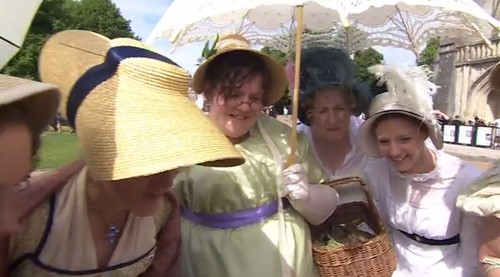
To view the complete video, see:
Jane Austen fans give verdict on new £10 note
(http://www.bbc.com/news/av/uk-40649721/jane-austen-fans-give-verdict-on-new-10-note)

To view the complete video, see:
Jane Austen centre gets fiver worth £50,000
(http://www.bbc.com/news/av/entertainment-arts-40649712/jane-austen-centre-given-5-note-worth-50000)
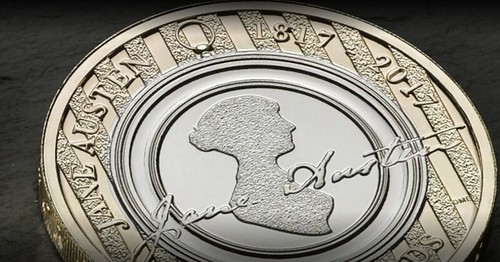
To view the complete video, see:
Was money a preoccupation for Jane Austen?
(http://www.bbc.com/news/av/business-40647121/was-money-a-preoccupation-for-jane-austen)
FEATURED WEB SITE: COINS AND HISTORY OF ASIA
This week's Featured Web Site is on the Coins and History of Asia.
Containing information and scans of over 3,600 coins, these pages are to be a resource for students of Near Eastern, Persian, Indian, Central Asian and Chinese history from 600 BC to 1600 AD. Permanent exhibits with emphasis on Sasanian, Hunnic and Central Asian coinages.
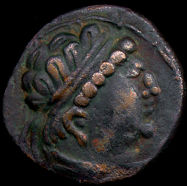
http://grifterrec.org/coins/coins.html

